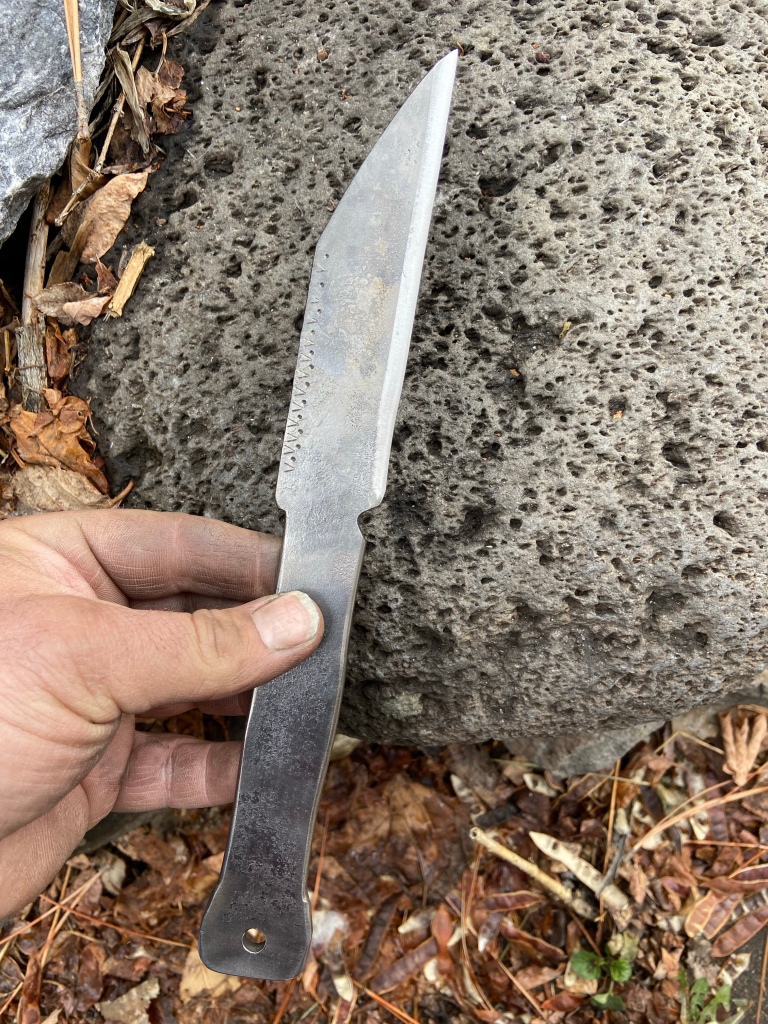Celts and Germans (Random thoughts and myth comparison)
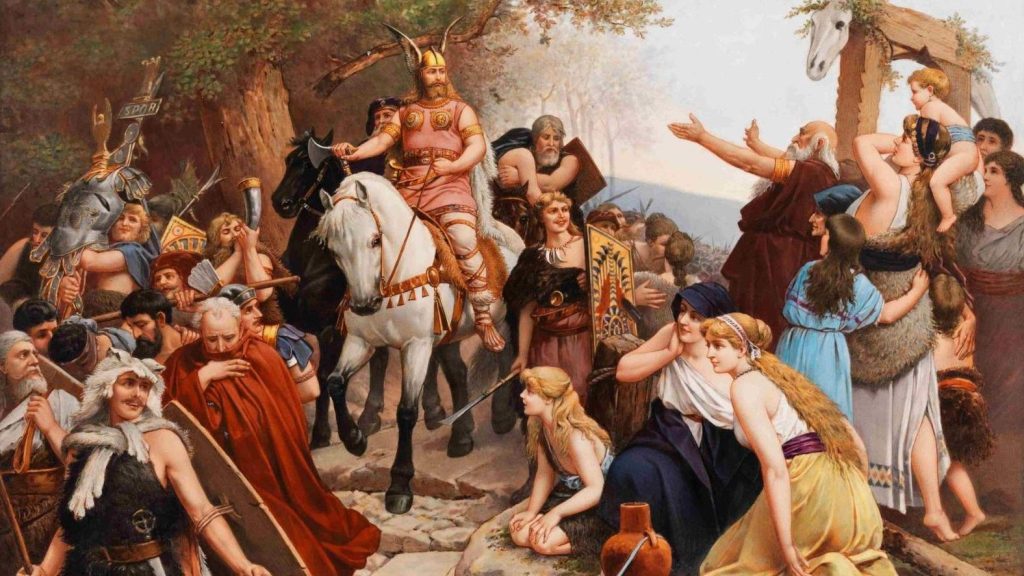
Germans, Celts, Manus, Teutates-Toutatis, Tuisto Etc.
The Celtic God Teutates is described by Roman writers as a Celtic God of War, associated or compared with both Murcury (Woden) and Mars (Tiw). It is said he was one of 3 major Gods worshiped by the Celts in Gaul and Britain (Taranis = Thor)
Esus (Ing) and Teutates (Tiew/Woden). In Tacutus’s Germania he describes the first information of Germanic tribes to be recorded: That they worship an Earth Born God called “Tuisto” or Tuisco* (*cognate to Tiw) earlier reportedly meaning “Two” or “double” and the later being possibly cognate to Tiw. Is Teutatis and Tiw (Tiwaz) somehow related? Is Tuisto in fact Teutatis and the name sake of the Tribes of which the Germans take their name (Deutsch).
Are Teutates, Taranis and Esu cognate to Woden þunor and Ing.
War, Thunder and Lord.
Celtic Sea God Manannán cognate to Germanic Manus? Manannan is described as a Tuatha Da Danan (People of Danu) a tribe of divine beings that inhabited Britain before the humans arrived. The Milesians (Celts or Scythians) then inhabited the Islands. Are the Tuatha Da Danan a reference to a Teutonic people previously inhabiting Britain? According to the Book Blood of the Isles (which did DNA surveys on Britain) found that Scotland particularly had a surprisingly high migration rate from Scandinavia during the Beaker and later bronze age.
The God Manannan has interesting comparisons to Ing or Freyr:
One:
Freyr is son of Njorð a Sea/Fertility God.
Manannan is son of Ler a Sea God
Two:
Freyr has a magic boat that fits in his pocket.
Manannan has a magic boat that guides itself.
Three:
Freyr has a magic sword which fights on its own.
Manannan has a magic Sword that steals his enemies strength.
Four:
Freyr has a magic boar he rides and is associated with horses/horse cults.
Manannan has a magic horse who rides over sea and land (Also Sleipnir like)
Both Celtic and Germanic myth describe a primordial Race of Giants being in conflict with the Gods of order. Greek myth which is also Indo European has Titans as the primordial beginning. The Germans have Ettins/Jotuns or Eotens and the Celts have
Formorians.
The Tuatha Da Danan Battled the Formorians in Celtic myth as the Vanir Battle the Æsir in Norse or Germanic although Vanir does not exist outside later Norse sources. It is unknown if the Eldest kindred of Teutons (Germans) acknowledged a difference between Gods or saw them as having tribes. Perhaps it was simply a matter of Æsir and Jotuns as the Vanir are descended from Jotuns technically. Elements of Celtic mythology appear to almost reference the settling of the Indo-Europeans across Europe and even place the Tuatha Da Danan as the northern most of these groups. (Later they are the Pagan Irish Gods).
Were the Formorians and Fir Bolg Hunter Gatheres and Neolithic Farmers?
While the Earliest Teutons share a vague Celtic attachment none are more vague than the Belgae:
The Belgae are both linked to the Cimbri and in their own words spring from the Germani a tribe who’s name later becomes a catch all for for all Germanic speaking people. Many of the Belgae names and descriptions say they are in fact Celts but signs of a true mixture of the two groups appears to be in sight. They are hostile to the Gauls but apparently can speak a form of Gaulish. The name Belgae has both Proto Celtic and Proto Germanic etymologies. It is said to mean swelling with anger or battle fury. Caesar states they are the most Brave and when he asked them of their deeds they stated that the Cimbri and Teutons failed to invade them. It is said later the Cimbri led partly to the Belgae as a people. There is inconsistency here.
The Belgae and Gauls are both said to wear winged or elaborate horned or crested helmets. The Celts wore Boar crested helmets as well did Germanic tribes. The Winged Helmet although the accuracy unknown was often attributed to the Teutonic tribes.
It should be noted the practice of Bog Sacrifice seemed to be held across Britain and Southern Scandinavia/Germany and the Nordic Bronze age shares more than a few traits also seen in the Bronze age portion of of the Hallstatt Culture which reached from its origin in Central Europe to the Balkans, Britain Germany and Netherland/Belguim/France. How far North it spread is unknown but the Gundestrup Cauldron appears to be of Balkan Celtic origin.
Sorry if this seems disjointed but it was a thought stream.
Hroð-
Dithmarschen Mjönir
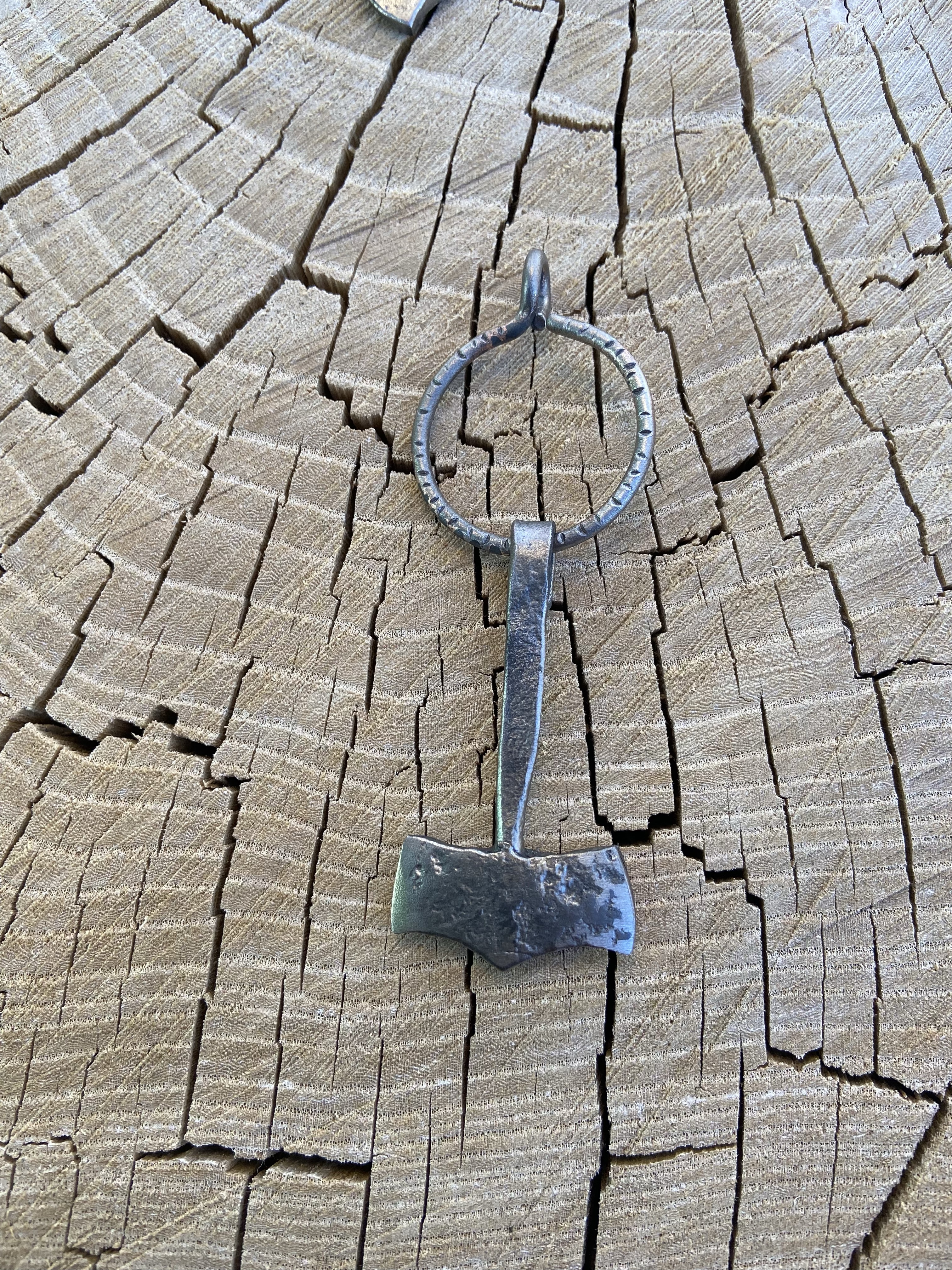
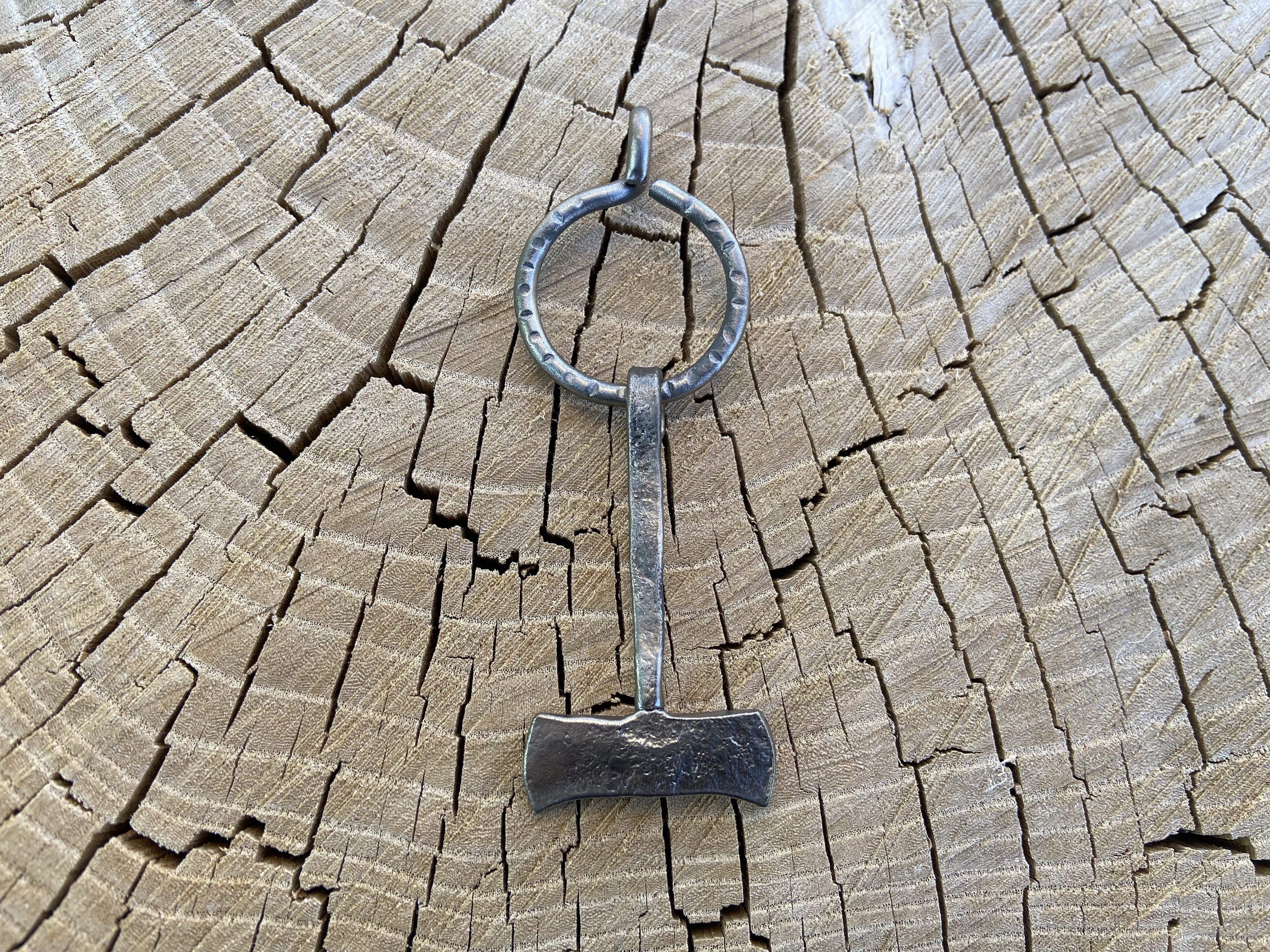
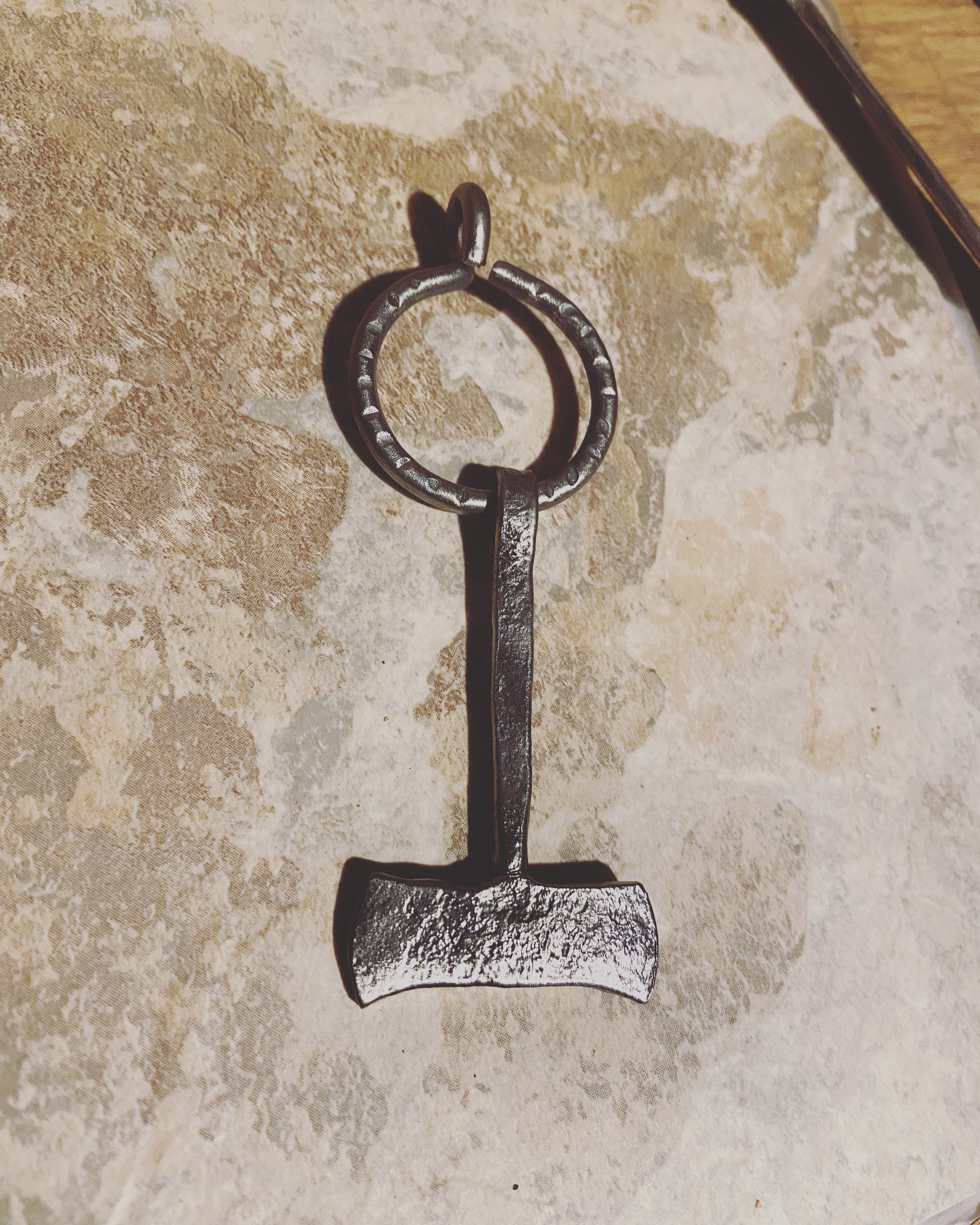
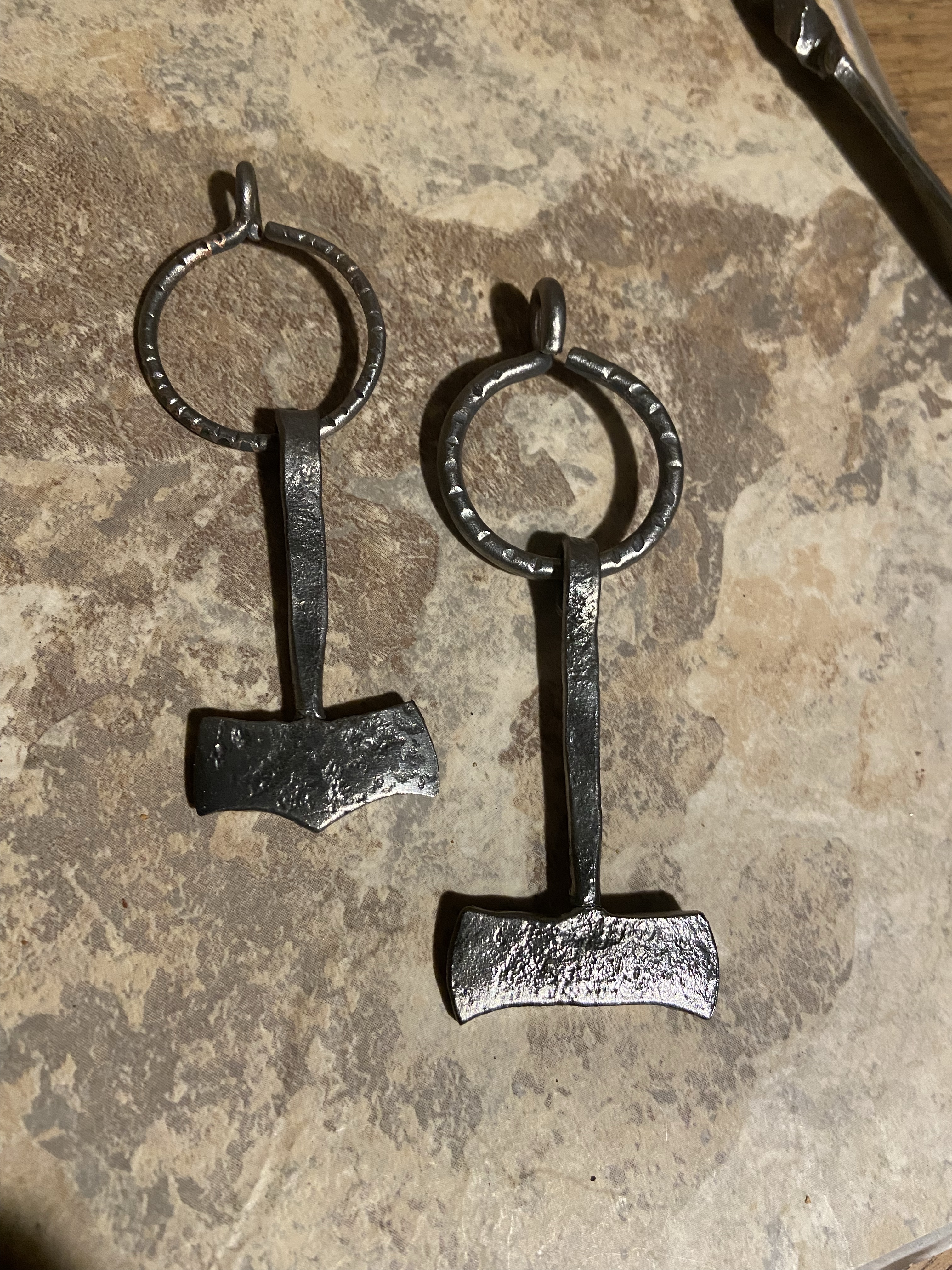
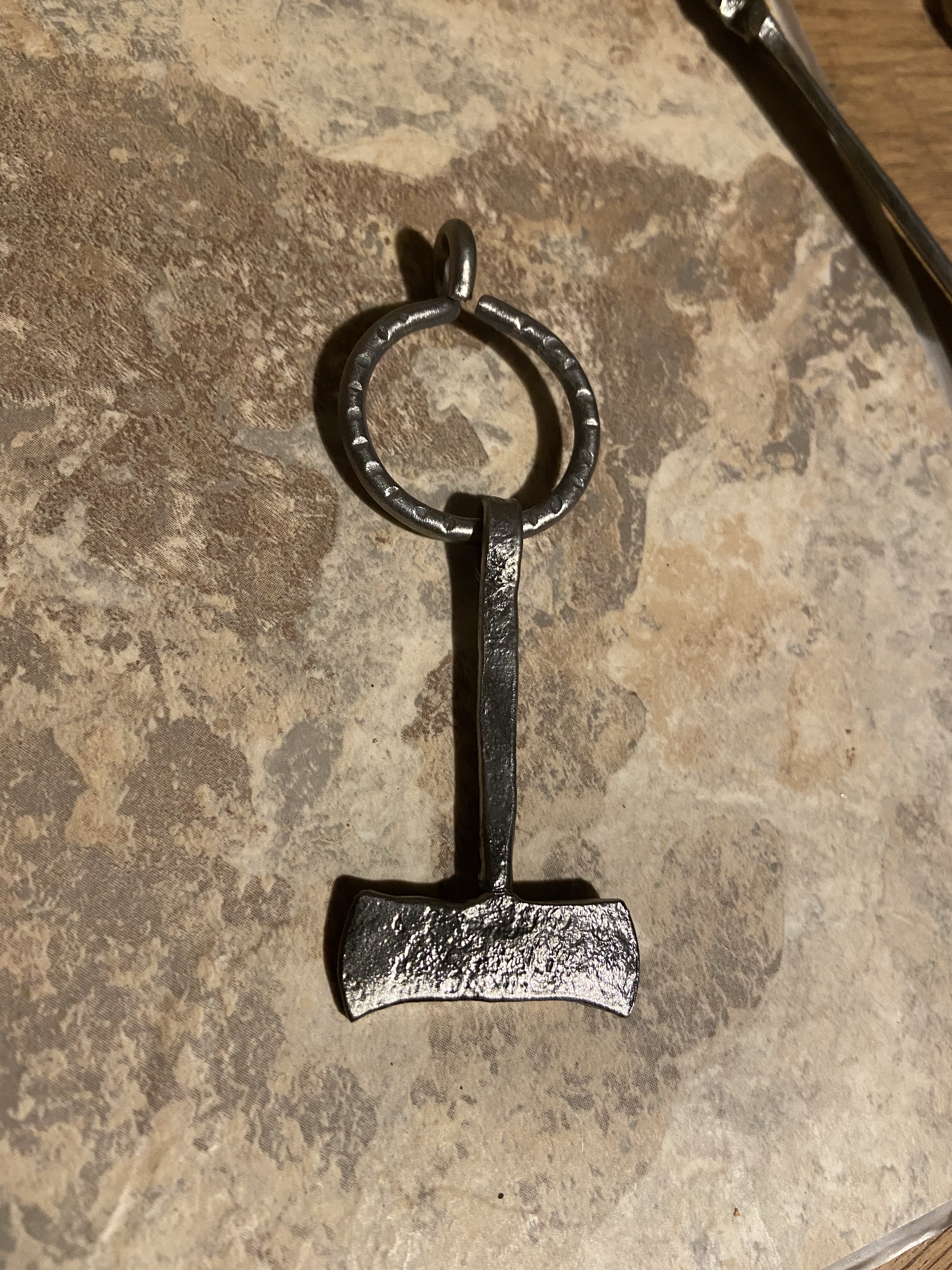
Hroð-
Etsy back up.
https://www.etsy.com/shop/NorseWest
After forever the forge is back in action. Trying to find a trip to Denmark/Germany. no customs just what is on here is available for now. Not back to knives yet. Hammer arm is a bit rusty yet.

Skål.
Hröð-
Who Are The Corded Ware People (Updated)
Today we will discuss the Corded Ware Culture and the people associated with it culturally .
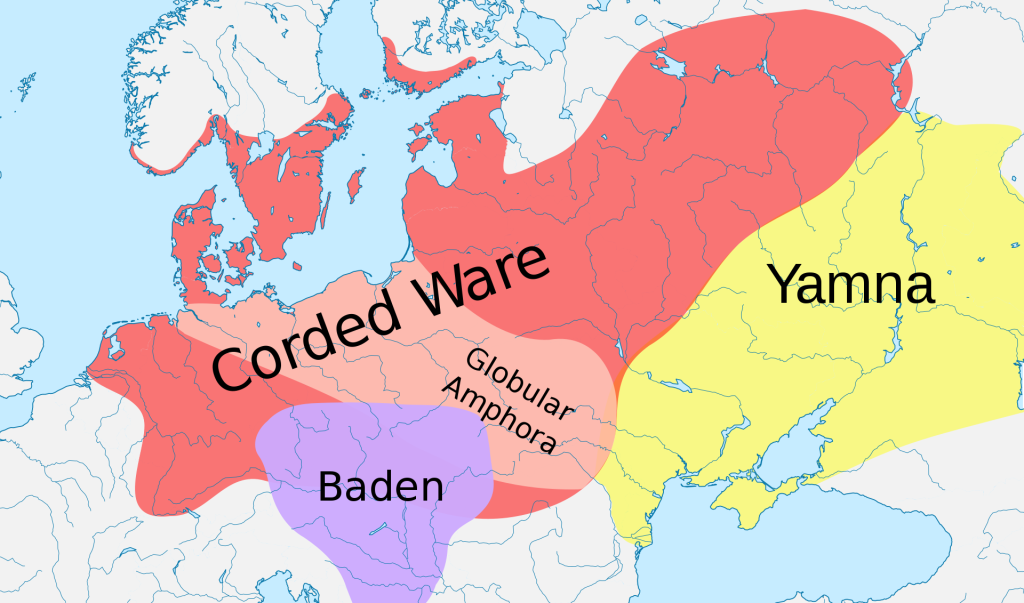
The Corded Ware culture is the western expression of the ancient Yamna or Yamnaya Culture of the Pontic/Caspian Steppes and possibly has components of West Central European Neolithic elements (David Anthony). Sintashta are the eastern expression of the Corded Ware and may represent what we today call Schythians, a mysterious Indo European tribe who seem to absorb or represent more than one later group. Genetically we see them connected with Gothic peoples, Slavs, Celts and some Uralic speakers as their empire stretched well across Eurasia. The Yamnaya people or maybe more accurately Proto Indo Europeans, theoretically appear to be the admixture of Caucasus Hunter Gatherers and Eastern Hunter Gatherers. R1B-R1A and G2A YDNA. The Neolithic farming communities of the Balkans and eventually all of Europe were descended from these Caucasus Hunter Gatherers as well (G2A). They had spread from the Caucasus into Anatolia and then to Europe. The Western Hunter Gatherer’s haplogroup ancestor (IJK) more than likely originated in the Caucasus or Iran. The I group then within Europe separated from IJK. R1B existed in Mesolithic Europe but rarely and did not see great expansion until the Corded Ware and Bell Beaker Complex. One of the Ancestral components of the Eastern Hunter Gatherer is the “Ancient North Eurasian” who is a common ancestor of Indo Europeans via the EHG and Siberian, Native American peoples via those who migrated to the Americas from East of the Urals. The Haplogroups U and H in MTDNA phylogenetic tree are children of the parent haplogroup MTDNA R. These represent a great deal of female European ancestry along with K, T and many others. The G haplogroup is technically a lesser branch of IJK from which the I, J and K YDNA groups are derived.
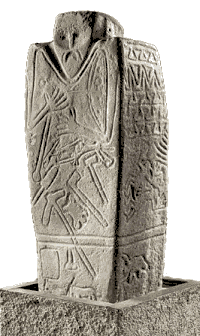




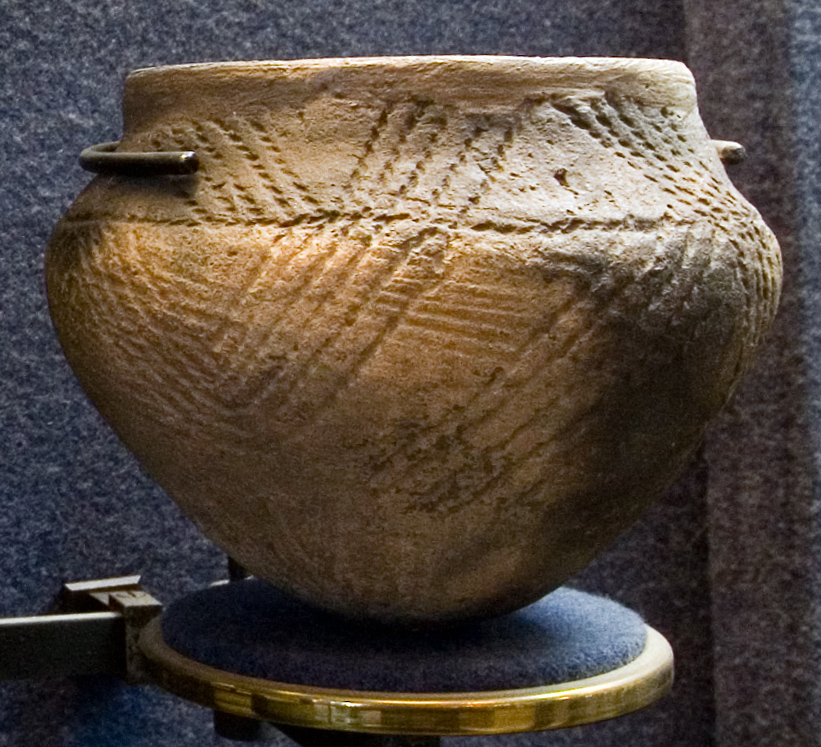
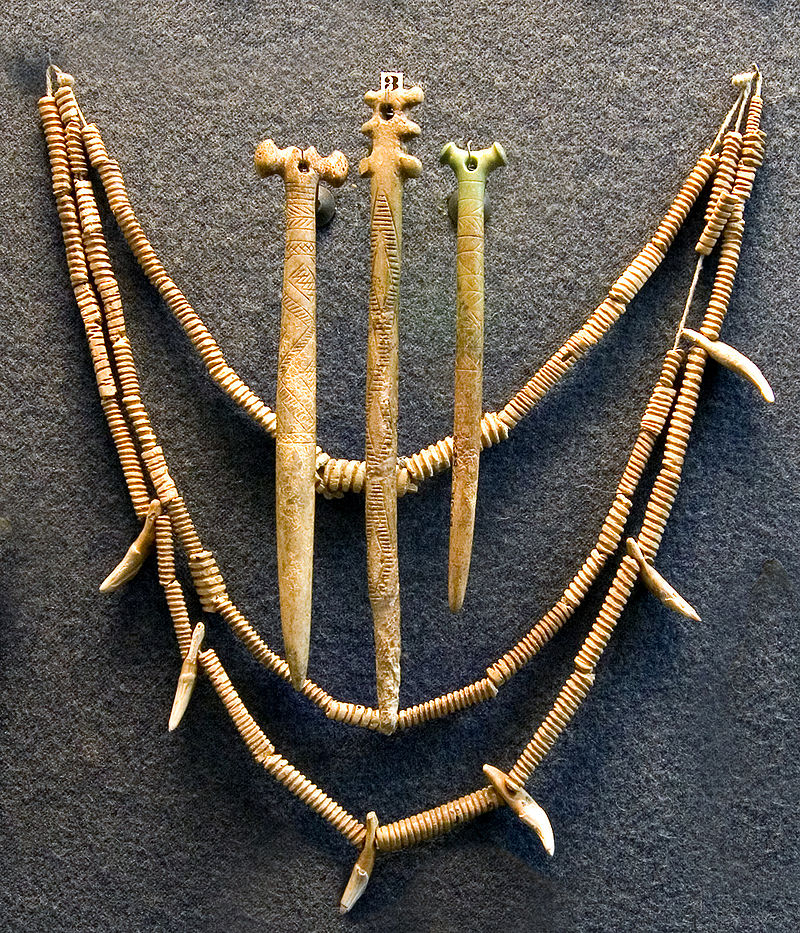


(Above) Yamnaya Culture related materials.
I DO NOT OWN THESE IMAGES , NORE DO I CLAIM ANY CREDIT TO THEIR CREATION. COPYRIGHT TO THE ORIGINAL CREATOR. MOST WERE TAKEN FROM WIKIPEDIA OR GOOGLE IMAGES.

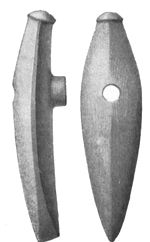






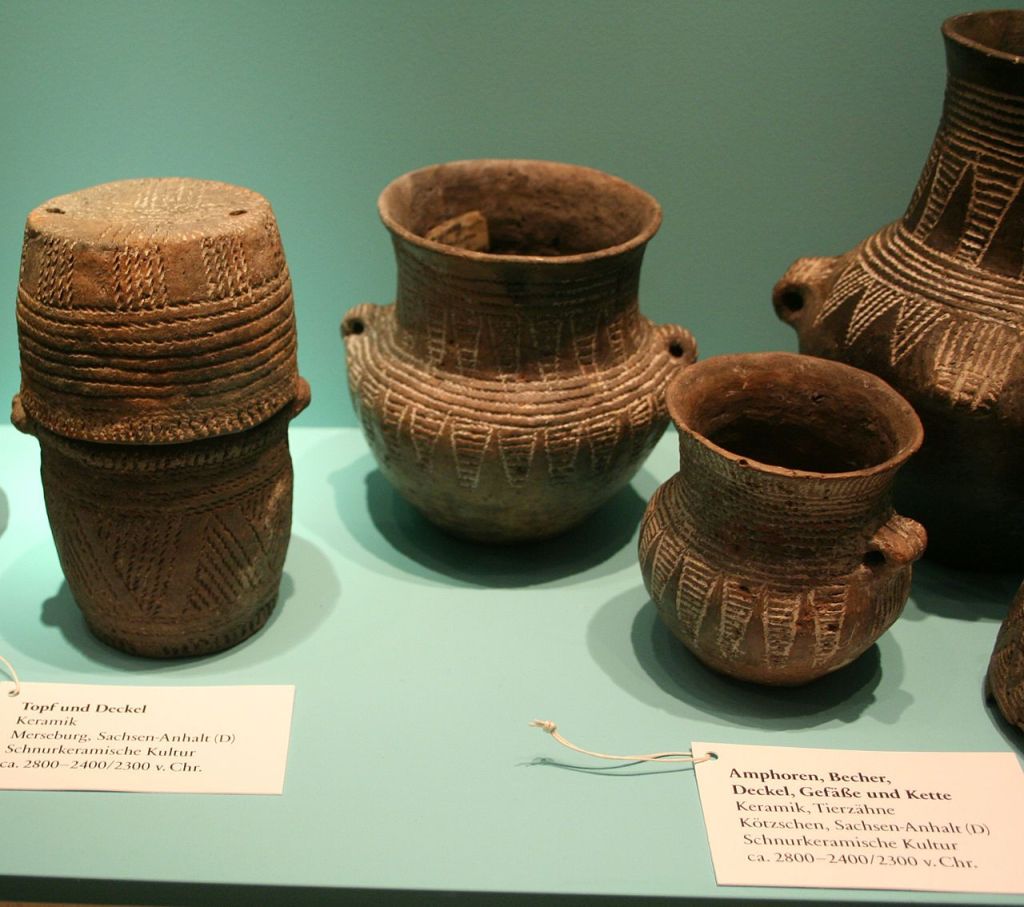
(Above) Corded Ware associated artifacts.
I DO NOT OWN THESE IMAGES , NORE DO I CLAIM ANY CREDIT TO THEIR CREATION. COPYRIGHT TO THE ORIGINAL CREATOR. MOST WERE TAKEN FROM WIKIPEDIA OR GOOGLE IMAGES.
The move from the Steppes to Central, Western and Northern Europe:

I DO NOT OWN THIS IMAGE: Source Google Search.
The people of Eurasia were largely Hunter Gatherers up till the Neolithic when groups in the Caucasus, Balkans and Anatolia began to develop and spread new farming technologies northward into Central Europe. In certain areas hunter forager cultures persisted such as in
Scandinavia and parts of the Urals and Western Steppe. Eventually Europe was overtaken by the new technologies and hunting centered life decreased but remained at least in some form as a guarantee against bad yields. The Farming groups represented by Varna, Vinca , LBK and others brought the Megalithic structures to western Europe and Scandinavia. It should be noted that signs of indigenous farming may have been detected before the arrival of Caucasian groups. These farming groups are believed to have been the evolution of the Caucasus Hunter Gatherer (CHG) a distinct group who’s G2A Haplogroup was the primary YDNA of the farming expansion while H in various forms and others were the MTDNA. The H groups also may have had some European distribution in the Mesolithic as well. The Northern contemporaries of the CHG were the Eastern Hunter Gatherer (EHG) centered in modern Russia, The Urals, Scandinavia and Finland. These Hunters were partly descended from the “North Asian Hunter Gatherer” and are the ancestral originators of the R YDNA group (R, R1B,R1A). It is suggested among other theories that the remaining CHG and EHG combined into a new culture and genetic group ancestral to the Yamnaya culture centered in Pontic Caspian steppes north of the Black Sea and Caucasus. This new culture with a complicated language began expanding in the late Neolithic north, South, East and West. The new culture was marked by changes in ideology, travel and customs demarcating them as different or novel from the previous farming and hunting cultures and separated from them by many generations. In a large picture they are the descendant in part from Farming groups but many generations removed. The language spoken was likely Proto Indo-European, a grammatically complicated heavily declined language resistant to barrowing from other languages. This language carried cultural terms unique to it revolving around horse domestication, wheels and mobile economy. It is theorized that this group was the first to tame and ride horses (Horse, Wheel and Language , David Anthony) and create a mobile semi nomadic wheel based economy. The oldest wheel to date on Earth was found in Slovenia at 5350 years old. This would place the wheel in the heartland of Neolithic European farming culture and at the edge of Expanding Steppe Cultures (PIE/WSH). It is also suggested (Theorized) that the Chariot was invented in the Steppes by PIE cultures and spread south via the Caucasus to the Middle and Near East. Archeology and linguistics supports this (David Anthony ). The remnants of words relating to these things are found throughout many ancient branches of PIE. The exact age of the branching is unknown, In David Anthony’s book he points out that Germanic/Baltic/Slavic might be the oldest branching after Anatolian and Tocharian . Also pointed out in David Anthony’s book the PIE language share deep relationships with Uralic language groups via very archaic shared pronouns and other features. In his book he relates the possibility of a shared Ancestor that by PIE and Uralic families descended from. Given the geography I think this is an interesting idea but these are now distinct language families and may have been related in only the most ancient sense. I would like to Add that the Basque language is sometimes referred to as a candidate for the only surviving Neolithic Language with no known membership in existing language families, however recent studies have found similarities with modern Caucasus based languages and the Basque share a similarity with Neolithic populations in a similar way as Sardinians. These Neolithic peoples were originally from the Caucasus and carried the Caucasian G2A Haplogroup that is prevalent still in the Caucasus and Mediterranean populations.
NOTE:
When I speak of interrelatedness to these ancient cultures it is through a modern lens and in no way reflects their actual interactions or relationships nor implies they saw themselves as related to each other.
Why the Expansion took place and what spurred it is unknown but archeology tells us that signs of steppe influence began to be detected in Late Neolithic cultures at the fringe steppe areas, Carpathian Basin, Danube Valley and other places. This included technology, status symbols and burial customs. Signs of hostile force is also detected where WSH groups replace or run out previous Neolithic cultures as they move west into Europe. Signs of peaceful coexistence also exist. The Western and Scandinavian hunters appear to have been most durable to this and you see the Hunter YDNA (I,I2,I1) persist in Scandinavia and have resurgence during the post Bell Beaker Central European Bronze Age. This however was not the case in Britain as the PIE DNA both Autosomaly and YDNA replaces the previous population within several generations. Britain is heavily WSH derived while Scandinavia retains as high as 60% Hunter derived YDNA (I1A) but via autosomal is heavily WSH derived. After 3000BC The Corded ware and their descendants start to become the majority culture in Northern Europe. The story in Southern Europe Is markedly different in that the culture existing when WSH people arrived were much more diverse.
It is believed the Corded Ware culture might have been the group responsible for introducing PIE languages to Northern Europe and other ascribe it as specifically Ancestral to Germanic culture however the Corded Ware horizon appears to be Ancestral all Northern European cultures including Germanic, Celtic, Slavic and Baltic etc. *My view is that the interaction with unique indigenous groups played at least some role in post CWC groups evolving into unique cultures we see today:
WEST CENTRAL EUROPE: Mesolithic to Later Iron Age.
+> indicates shared origin.
* indicates an adjacent culture and genetic contact with PIE groups.
These charts are not exhaustive to every culture or group.
Western Hunter Gatherer*
Neolithic Farmer*
CWC Horizon+>
Bell Beaker Trade Complex+>
Unetice+>
Tumulus+>
Urnfield culture+>
Hallstatt Bronze Age/Iron Age+>
Le Tene Culture (Iron Age)+>
Pan Celtic civilization +>.
NORTHERN EUROPE: (Mesolithic to Iron Age)
Western, Eastern and Scandinavian Hunters *
Neolithic Farmers*
Funnelbeaker Culture (Hunter/Farmer mixed) *
CWC+>
Single Grave Culture+>
Beaker Culture+>
Unetice Culture+>
Nordic Bronze Age+> (Recognizable signs of Germanic Culture)
Jastorf and Wielbark Cultures (Iron Age)+>
Pan Germanic Cultures+>
BRITAIN: Mesolithic to Iron Age..
Hunter Gatherer (First Population) *
Neolithic Farmer (Second population) *
Bell Beaker Chalcolithic Warrior (Pie)+>
Bronze Age Briton (Descended from Beaker)+>
Le Tene Celtic culture+> (Arrives from NW Europe Iron Age)
British Celtic Tribes+>
EASTERN EUROPE:
Eastern Hunter and North Eurasian Hunter+> (Ancestor to Sredny-Stog-Yemnaya)
Western Hunters+>*
Caucasus Hunter+>*
Neolithic Farmers+> CHG* (Simplified term for many cultures)
Contemporary Forager Cultures *
Sredny Stog (Pre PIE? EHG-CHG) +>
Yamnaya (Pie) +> (EHG and CHG)
Corded Ware-Fatyanovo, Sintashta, Andronovo, Srubnaya Etc.+>
Únětice culture+>
Lusation Urnfield Culture +>
Schythians and Aryans (Non political meaning)+>
Pre Slavs?+>
This is just to give a bare idea of the influence of Steppe culture throughout Europe.
Tumulus and Urnfield cultures are mentioned as possibly Ancestral to Celtic culture which was later expressed by the Hallstatt Culture. Often Germanic and Celtic are placed close in the PIE family tree but recent opinions have linked Italic and Celtic as a western branch and Germanic, Baltic and Slavic as a Northern Branch. This being said it is not hard to see a general relatedness especially in the ancient form of each of these languages. Their exact correct placement is unknown as is their exact date of branching. Germanic may have branched as far back as 3500BC or as recently as the Nordic Bronze Age. Germanic customs have a certain amount of unique traits that may be remaining elements of the Pitted Ware Culture or other Scandinavian Hunting groups. As mentioned above Germanic populations are generally higher in Hunter and then Steppe ancestry while southern Europe is more farmer derived. Central Europe being the epicenter of WSH culture (PIE) has high relations rates to Yamnaya derived groups with less hunter and farmer. South Eastern Europe also has distribution WHG I2A. Neolithic female populations play a greater role in Northern Europe than male lineages as G2A is rare but I-M170 with its descendants and R1B/R1A are frequent. Germanic culture appears at least with current information to have been born out of the Hunter/Corded Ware and Single Grave/Bell Beaker group in Jutland or Southern Sweden. It then developed into the Nordic Bronze Age with at least some influence from Unetice and Hallstatt via trade and other contact. All of this of course is hypothetical postulating.
A further note:
In the ideas above I have simplified many elements and the info is not exhaustive. I also want to make sure that the Neolithic cultures are not under represented. The Funnelbeaker Neolithic culture was very widespread in Scandinavia and butted up to remaining Scandinavian hunters like the Pitted Ware culture. This same culture (Funnelbeaker) was also in Germany, Poland and Czechia when the Late Yamnaya arrived from Eastern Europe/Western Steppes. David Anthony proposes they arrived through the Danube Valley and that Corded Ware was a local construction that the Yamnaya made contact with and this grew into the wide spread Corded Ware culture that may have brought PIE languages to Northern Europe. They may have also carried not just PIE elements but remaining Neolithic elements as well. He also proposes the Beaker folk was a pre existing culture that Corded Ware made contact with but we know now via DNA that the Beaker Culture was descended from the same source population as Corded Ware and Yamnaya. In the Same section of his book it is put forth that the Ancestor of Germanic bifurcated from PIE in Eastern Europe which may be true but the actual language we know as Germanic I personally believe developed in Scandinavia nor central Europe during the Corded Ware/Single Grave period . On the subject of Bell Beaker I want to touch on my previous articles and after gaining further insight from the second time I read The Horse, Wheel and Language. The Bell Beaker designs appear to be either evolution from Corded Ware or Funnelbeaker/Corded/Protruding Foot Beaker designs or cruder copies of a Neolithic Iberian design. The Atlantic EBA was flourishing at this point and these could have been traded north from existing Neolithic crafters into arisen Yamnaya descended areas. We know via DNA the Beaker folk were not local to Western Europe but part of migratory Steppe peoples who likely Spoke PIE languages. It could be seen in a way that the Bell Beaker people (not pottery) were just the western most expression of Corded ware that picked up a new pottery style. Other Proto Indo Europeans groups earlier in development sometimes used pottery from surrounding areas. Sintashta and other CWC derived groups became unique eastern branches of CWC so why not a western most branch? The basic traditions of Corded Ware/Battle Axe/ Single Grave were intact in the Bell Beaker horizon. These traditions included single grave burials with goods like stone axes or hammers, copper daggers and Kurgans erected above the grave. The Beaker People represent the majority of British ancestors but are we to believe CWC just stopped at the coast and Beaker people had no connection?. We now have DNA to answer the question that yes The Beaker Folk were Corded Ware and that R1B was prevalent in CWC peoples. Some make them ancestral to Germanic, some to Celtic and Italic cultures. I would also like to add that I agree with the theory that Germanic, Baltic and Slavic belong in a branch together and Celtic and Italic belong in another branch around the Alps perhaps. If you look at word forms and etymology Celtic and Italic languages share some traits as well and mythology elements. If you look at certain words and mythology between Germanic, Baltic and Slavic languages certain elements are shared such as a female personification of the Sun, symbols, cosmology and animistic nature worship elements. A great deal of shared elements can be seen across Indo European religion and Germanic and Celtic people had considerable contact with each other but so did Germanic, Baltic and Slavic peoples. The contribution of the stone axe in the Corded Ware/Battle Axe cultures may have been pre-existing among the Funnelbeaker and other Indigenous groups. The Neolithic cultures of Europe, although likely distributed via Female lineages should not be underestimated either. It is recorded that males in the LBK culture of Central Europe’s Neolithic were buried with Stone axes. These males made little impact genetically but their women and traditions may have.
I hope this inspired you to dive into European Anthropology. Please go read and make up your own mind. I am only an amateur but find it endlessly fascinating.
Books and resources:
The Horse, The Wheel and Language by David Anthony (Highly detailed)
Skelhøj by Madz Kähler and Marrianne Rasmussen (Very Technical)
Bronze Age Metal Work by Nørgaard (Very Technical)
The Mound People by Glob
The Bog People By Glob
Myths and symbols in Pagan Europe by H.R Ellis Davidson (Early Celt and Germanic religion)
Eupedia.com (Great Maps and info on DNA)
Wikipedia.com (with a grain of salt/check other sources)
Wiktionary.com (etymology and tables)
Youtube.com (Good Documentaries)
Happy researching!!
Hroð-
Ancient DNA
Today we are going to talk in detail about how to relate to your ancient DNA results. Sometimes it can be difficult to determine exactly what the results mean and how they relate to your modern DNA make up. I will give a few examples using typical terminology.
Using my DNA I will give an idea of the break down and how to gain further insight to which ancient groups you relate to.
on “My True Ancestry” they use a simple concept, take your DNA mathematical numbers and apply them to a database of old archeological DNA samples. After you upload you access to several diagnostic tools like Deep Dive (actual relatives), Sample matches and haplogroup diagnostic breakdowns of your sample matches and deep dive.
My DNA breaks down this way: YDNA Haplogroups:
Samples matching with Indo-European/Steppe/Ural related Haplogroups (Late Neolithic/Chalcolithic/Bronze Age, Iron age through modern) 76.27%
Hunter derived samples indigenous to Europe (Paleo/Meso/Neo) 21.89%
Farmer matching samples (Neolithic) 1.75%
Lets take an even deeper look: If you take a look at my DNA thumbprint you see the entire timeline of matching samples and their exact distance (Small numbers are better) so take a Neolithic mixed Hunter/Farmer sample from England (4700 years ago). Compared to other users I match this sample at 98% but on the timeline the distance is 53. Take a pure Mesolithic Hunter sample from England (9000 years ago) my distance 19 and a compared user match of 90%. More than halfway closer in genetic distance. Now we take a sample from Neolithic Sweden (4900 years) who is Hunter/Corded ware mixed (Indigenous and Indo European) from the battle axe culture. Distance 4. 98% user match. This gives us an idea of what ancestry became dominant at the Bronze age, especially in people Ancestral to Germanic culture. It is a Corded Ware/Hunter break down with I1 hunter lineages, female hunter, Indo-European, Neolithic Caucasus lineages (U,H,K,T etc) and male Indo European/Scythian Kurgan lineages (R1A/R1B).
lets have a look at Some Bronze Age/Iron Age Indo-European samples:
Czechia Bell Beaker: Distance 4. Match 100%
England Bell Beaker: Distance 4. Match 100%
Bohemia Corded Ware: Distance 5. Match 100%
Corded Ware Alps: Distance 5. Match 100%
Scythian Ukraine Steppe: Distance 6. Match 100% (Early Iron Age/600BC)
Corded Ware Bohemia: Distance 5. Match Data Unknown.
Danish Viking Sample: Distance 3. Match comparison 100%.
My Top Samples per era:
Neolithic/Chalcolithic : Corded/Bell Czechia and Battle Axe Sweden.
Early Bronze Age: Bell Beaker England and CWC Bohemia
Late Bronze Age: Britain and Hungary (BEAKER/CWC/Schythian)
Iron Age: Scythian Ukraine and Iron France (Germano Celtic tribes DNA).
Roman Age: British Celt and Alemannic German.
Dark Ages: Scandinavian derived Lombard and Anglo Saxon.
Medieval Period: All 10 top samples are Denmark, Sweden and Greenland.
Top Early Modern: Gotland, Latvia, Iceland.
Top all time Matching Sample in distance: Danish Viking Distance 3. Match comparison 100%.
Number of Deep dive (Actual relatives) Samples per region:
45 Scandinavia.
31 Britain.
37 Germany, Central Europe/Eastern Europe.
………………………………………….
MY general matching samples per region:
Viking Denmark: 16
Viking Sweden: 20
Norway/Iceland/Greenland, Faroe: 15
Anglo Saxon and Viking England: 11
Scandinavian/Nordic total matching samples: 61
………………………………….
Germania minor and major (Germany, France, Netherlands, Switzerland): 44
Czechia/Poland and Urals/European Steppe regions: 71
Western to Eastern Europe total matching samples: 115
………………………………………………….
British Isles: 51
Total matching British Isles Samples: 51
……………………………………………………..
All Sample numbers above include all matching samples from all eras based on Geographic location*
Closest Matching Groups to my DNA by distance 15000BCE-3600BCE:
Funnelbeaker Czechia.
Western Hunter Gatherer.
Hunter Farmer Mix: Britain.
Most closely related Ancient groups to my DNA by distance 3600BCE-600BCE:
Czechia: Bell Beaker.
Czechia: Corded Ware Culture.
Swedish: Battle Axe Culture.
Alps: Corded Ware Culture.
Únětice Culture (Possibly ancestor to or influenced Slavic/Baltic/Germanic)
Bell Beaker: Germany.
Bell Beaker: Britain.
Schythian: Ukraine,Hungary, Moldova, Pontic Steppes.
Fatyanovo Russia (Proto Baltic)
Most closely matching groups to my DNA by distance 600BCE-110AD:
Schythian Kurgan Culture: Hungary, Ukraine.
British and Gaulish Celtic Tribes.
Most closely matching groups to my DNA by distance 110AD-600AD:
Germany and Eastern Europe Tribes: Goth, Saxon, Lombard, Rugii, Frank, Alemannic.
Celtic Britain.
Most closely matching groups to my DNA by distance 600AD-1200AD
Top Match: Viking Age Denmark-Viking Age Sweden.
Viking Age Greenland.
Viking Age Iceland.
Anglo Saxon England.
Most closely matching groups to my DNA by distance 1200AD-1700AD:
Denmark.
Sweden.
Most closely matching groups to my DNA by distance 1700AD-2019AD:
Denmark.
Sweden.
……………………………,,,,,,,,,,,,,,,,,,,,,,,,,,,,,,,,,,,,,,,,,,,,,,,,,,,,,,,,,,,,,,,,,
The above info was gleaned from MYTRUEANCESTRY.com Diagnostics.
Gedmatch info/breakdown:
MY DNA VS. Using oracle population search with Poland as substring MDLP Project K11 modern. Corded Ware Proto Unetice culture:
Top 3 results:
Alberstedt_LN (Corded Ware/Bell Beaker transitional burial site) Germany.
Halberstadt_LBA (Urnfield and Lusation (Urnfield burial tradition) possibly related to Early Baltic or Slavic cultures) Germany/Poland.
Bell Beaker Germany.
The above cultures are associated with the Yamnaya-Corded Ware horizon and its evolution into the Single Grave cultures like Urnfield, Lusation, Tumulus, Unetice etc where it is seen that the various Indo European burial customs take hold.
MY DNA VS puntDNAL puntDNAL K12 Ancient Bell BeakerCzech RISE 569:
Top 3 results:
1 Unetice_EBA_I0117 (Bronze Age) Indo European.
2 Bell_Beaker_Germany_I1549 (Chalcolithic) Indo European.
3 Halberstadt_LBA_I0099 (Lusation/Early Urnfield) Indo European.
My DNA top 4 results (modern) from Gedmatch Eurogenes K13:
Sweden
Norway
Northern Germany
Denmark
Now for how we decipher the information above:
My DNA is basically at this point almost all Yamnaya derived, I have almost no Neolithic farmer male Ancestry (G2A) but measurable Neolthic Female lineages, and considerable Indo European (Yamnaya) Female and male lineages. My first male Ancestor’s bifurcated Haplogroup originated in either the meeting of the Hunter Farmer or mixed Hunter/Farmer and the Corded Ware. It is I1a which ultimately derived from the oldest haplogroup in Northern Europe (I branch) but its mutation is dated almost exactly at the arrival of the Corded Ware. This Haplo group expanded and became dominant in the Nordic Bronze Age where in Scandinavia the Hunter lineages persisted but took on PIE women from the western steppes. My highest haplogroup lineage based on samples is R (R1B-R1A) Followed by I (I2-I1). Later in Northern Europe R lineages became competition for I lineages but never fully won out in Scandinavia. My First male Ancestor is Battle Axe Sweden or in more Ancient terms essentially Paleo European. (I has existed in Europe since Humans have existed in Europe). My Female MTDNA is Neolithic British and matches a specific North Atlantic mutation. It is a branch of H likely resulting from the meeting of Farmers and Hunters in Britain. Its parent origin is something like 27000 years ago in the North Caucasus overlooking the Steppes. My highest MTDNA Haplogroups are H in several variations (Indo and Farmer lineages) T and U5 (Paleo/Meso Hunter Females from Finland/North Eastern Europe). One Way to Look at it is my Haplo Lineage is Indigenous European (First two groups to settle) and My Autosomal (Actual genetic make up) is Indo European. So seeing all the Above Autosomal results in Ancient times you See places like Czechia and Poland or Germany rank fairly high and Also Britain but other than one very old Scandinavian Battle Axe Sample its all central European. My modern results however are Scandinavian?? well the answer to this can be discovered in the diagnostic tools on MYTRUEANCESTRY.COM. When you Take all of the above samples into detailed view they match more the modern population of current Nordic countries. These central Corded Ware groups migrated out of north central Europe into Denmark and Scandinavia around 3500BCE and then subsequent populations like the Bell Beaker who were likely a subset of the Danish Single Grave Culture expanded again into Scandinavia reinforcing the Yamnaya or Western Steppe Herder DNA in Scandinavia and creating the Nordic Bronze age which shared genetic and tradition similarities with Britain and Central Europe. It then evolved into a unique culture we see expressed in the weapons, art, horns and shields. Although in places like Sweden the I lineages remained dominant the Autosomal became largely PIE derived. This should be side barred with the knowledge that Germanic people have higher Hunter ancestry than other parts of Europe. This is likely what caused Germanic culture to be different to say Celtic culture (which is still very close) to but took new and different expressions. Mythological elements may refer to elder indigenous Hunter Gods/Goddesses and small archaic remnants of language as well. As described in David Anthony’s Horse/Wheel and Language such contact between Yamnaya folk and the remaining hunter/farmer people could not have resulted in 0 borrowing or loan words. The PIE people were notoriously resistant to borrowing words and anywhere they went they almost uniformly replace the original inhabitants through absorption. It is likely some of the Animistic and Shamanic ideas were from the Hunters and some seasonal ideas maybe inherited from the farmers as well as a glut of technology from the farmers who represented the most advanced civilization in Europe (Think Vinca and other cultures). The farmers also likely introduced the longhouse to Northern Europe as opposed to the hunters huts and other dwelling types.
A geographical look at my DNA:
My Paternal Haplogroup and the common ancient maternal group associated with I Haplogroup: I1A and U5:

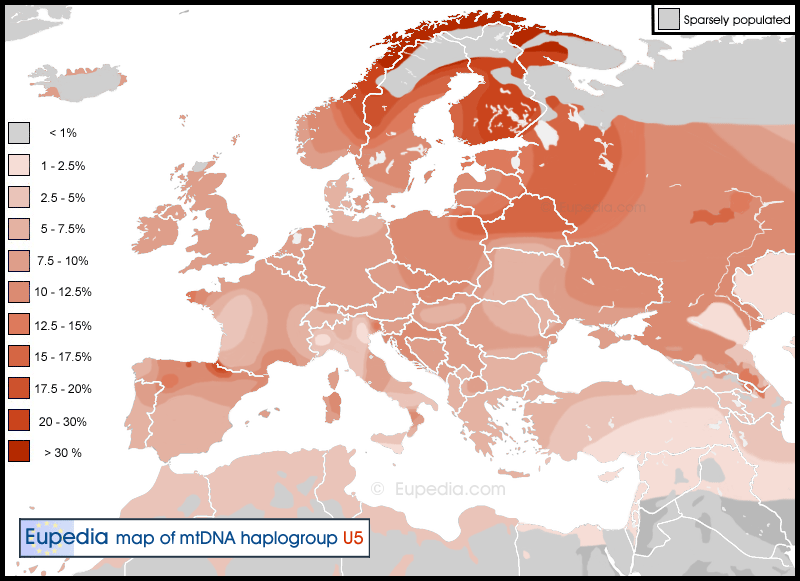
My Maternal Haplogroup: H.
The exact origin of H and all of its subclades in unknown and its age is estimated at 27,000 years. My specific subclade is found almost exclusively in Germanic and Celtic Europe but its age is unknown. The H subclades were associated both the Neolithic expansion from the Caucasus and Balkans (Farming) but some clades also may have already existed in Mesolithic Europe. The arrival of the Indo Europeans with R1A and R1B YDNA brought additional H clades into Europe. I do not know if my lineage began in Britain or Scandinavia in the Mesolithic, Neolithic or Bronze age but as far as living people with the clade it is found in Ireland, Scotland, England, Sweden, Denmark, Germany and Switzerland. It is most associated with Ireland and Western Scandinavia. The H lineage is extremely diverse and European MTDNA is far less homogeneous than the YDNA. All this being said my mothers great grandmother was reportedly from Ireland but had an Anglo Saxon name. I imagine the Subclade arose between the Neolithic Stone builders and the chalcolithic Beaker Kurgan builders in Ireland or Britain and might have been spread around in the Viking age. The total origin of H could be between the Balkans and the Caucasus 27,000-33,000 years ago.
The Final Breakdown:
The Above information is how I have interpreted my Ancient DNA using two different diagnostic sites, but yielded similar results. If you are using these sites you can glean a great deal of information but you must compare data side by side. Once you have seen a wide variety of data you can create an aggregate to answer your questions about Ancient DNA.
Tribal associations:
Goths
Danes
Vendel Swedes
Suevi
Anglo Saxon and Saxons
My aggregate: (Autosomal Closeness)
Primary Ancient DNA: Corded Ware-Battle Axe Culture.
Secondary Ancient DNA: Hunter Gatherer. (SHG, EHG,WHG)

HAPLOGROUP:
YDNA Scandinavia 12,000 to 4000 years ago> I1A. (Parent I (M-170) Paleolithic Europe 33,000 to 55,000 years ago). Most likely date of expansion is Nordic Bronze Age. It is theorized to have existed in Scandinavia as a minority subclade from the Mesolithic until the bronze age. My Subclade in modern era is associated with the movement of Vendel culture people into Western Europe and the Anglo Saxon tribes who existed in Scandinavia before migration.
MTDNA: Britain 2100 to 8200 years ago > H (Subclade) (Parent H Paleolithic Caucasus 27,000 to 33,000 years ago.) Given its distribution with Germanic and Celtic PIE culture it hypothetically could have been carried by the the Bell Beaker Single Grave Builders who represented a genetic majority in Early Bronze Age Europe and were the primary formative DNA of modern Britain and Ireland.

Thanks for having a look!
Hroð-
Anglo Saxon word of the day: Yþlad
Anglo Saxon word of the day:
ȳþlād (voyage, crossing) poetic sense.
From:
Proto-West Germanic: *unþi
Old English: ȳþ
Middle English: ythe, uthe, ithe
English: ithe
Old Saxon: ūthia
Old Dutch: *unthia, *untha
Middle Dutch: unde, onde
Dutch: onde (dialectal)
Old High German: undia
Middle High German: unde, ünde
German: Unde (obsolete, dialectal)
Yiddish: אינד (ind)
Old Norse: unnr, uðr
Icelandic: unnur
And:
Old English: lād, ġelād
Middle English: lad, lode, loode
Scots: laid, lade
English: lode, load
Old Frisian: lāde, lēde
Old Saxon: lēda
Middle Low German: leide
→ Norwegian: leide
→ Old Swedish: leidh
Swedish: lejd
Old Dutch: *lēda, *leida
Middle Dutch: leide
Dutch: lei
Old High German: leida
Middle High German: leite, geleite
German: Leite, Geleite
Old Norse: leið
Icelandic: leið
Faroese: leið
Norwegian:
Norwegian Bokmål: lei, led
Norwegian Nynorsk: lei
Old Swedish: lēþ
Swedish: led
Danish: led
→ Proto-Finnic: *laita
Estonian: laid
Finnish: laita
→ Proto-Samic: *lājδ
Bonus:
Wrǣtt (Ornament, jewel)
Hroð-
Anglo Saxon word of the day: acweorna
Anglo Saxon word of the day:
ācweorna (squirrel)
The first denotes “oak” the second element “weorna “ denotes squirrel.
Proto-West Germanic: *aikwernō
Old English: ācweorna
Middle English: acquerne
Old Frisian: *ēkworna, *ēkhorna
Saterland Frisian: *Eeker (in Kateeker ?)
West Frisian: iikhoarn, iikhoarntsje
Old Saxon: *ēkhorno
Middle Low German: êkhōrn, êkhōrne, eikhōrne, êkhorn, êkōrn, eikōrn, êkōrne, echhorne
⇒ Dutch Low Saxon: Eekhoorntje
German Low German: Ekkern
Westphalian:
Ravensbergisch: Aik, Aikern
Sauerländisch: Ēksken, Aikerte
⇒ German Low German: Eekhoorntje
Old Dutch: *ēcorno
Middle Dutch: êencōren
Dutch: eekhoorn
Old High German: eihhorno, eihhurno
Middle High German: eichurne
Alemannic German: Eichhore
German: Eichhorn
⇒ German: Eichhörnchen
⇒ Hunsrik: Eichhernche
Old Norse: íkorni
Icelandic: íkorni
Faroese: íkorni
Norwegian:
Norwegian Bokmål: ekorn
Norwegian Nynorsk: ekorn, ikorn
Old Swedish: ēkorne, īkorne
Swedish: ekorre, (dialectal) ikorn
Old Danish: īkærnæ
Danish: egern
Westrobothnian: ickȯrn, ikårn, ikkårn
Elfdalian: aikuonn
Jamtish: íkuðn
Gutnish: eikånn
Scanian: igarne
Bonus:
maniġfeald (manifold, many fold, of many parts)
Old English: maniġfeald, mæniġfeald
Middle English: manifald, monifald, manyfold, manifold
English: manifold, manyfold
Old Frisian: manichfald
Old Saxon: managfald
Old Dutch: *manigfald
Middle Dutch: menichvout
Dutch: menigvoud, menigvoudig
Old High German: manicfalt, manicfaltīg
Middle High German: manecvalt, manecvaltec
German: mannigfaltig
Old Norse: margfaldr
Icelandic: margfaldur
Norwegian: mangfoldig
Old Swedish: mangfalder
Swedish: mångfald, mångfaldig
Danish: mangefold
Gutnish: manggfaldur
Gothic: 𐌼𐌰𐌽𐌰𐌲𐍆𐌰𐌻𐌸𐍃 (managfalþs)
Hröð-
Anglo Saxon word of the day: Geryne
Anglo Saxon Word Of the day:
ġerȳne (mystery) using the word “Run” (rune)
Proto Germanic “garūniją”.
Proto-West Germanic: *garūnī
Old English: ġerȳne
Middle English: irīne, *yrīne, ʒerīnu (pl.)
Old High German: *girūni
Middle High German: gerūne, geriune
German: Geraune
Gothic: 𐌲𐌰𐍂𐌿𐌽𐌹 (garūni)
Bonus:
ċeahhettan ( to laugh loudly, cackle)
Hroð-
Anglo Saxon word of the day: Preowthwil
Anglo Saxon word of the day:
prēowthwīl (to blink) (the time it takes to blink)
Bonus 1:
Hagosteald (an unmarried warrior of royal descent) (bachelor)( liegeman) (owner or one who lives on fenced land of their family) sometimes acts as a personal name. Alternate:Hægsteald.
Old English: hæġsteald, hagulstead, hagosteald
⇒ Old English: Hagustealdesēa
⇒ Old English: Hagustealdeshām
English: Hexham
Middle English: hassel, haselle
Old Saxon: hagalstad
Old High German: hagalstalt, hagastolt
Old Norse: haukstalda
Bonus 2:
wīġbǣre (warlike) (eager for battle)
Hroð-
Anglo Saxon word of the day: Tirgan.
Anglo Saxon word of þe dæg:
Tirġan (ᛏᛁᚱᚷᚨᚾ) ( to provoke, pain, irritate)
Old English: tergan, tiergan, tyrgan, tirgan, tirian; tierwan
Middle English: terien, tarien, taryen; terȝen
Scots: tarrow
English: tarry
Old Frisian: *tergia
West Frisian: tergje
Old Saxon: *targian, *tergian
Middle Low German: tergen, targen
→ Danish: tærge
→ Norwegian: terge
→ Swedish: targa
Old Dutch: *tergen
Middle Dutch: tergen, terghen
Dutch: tergen
Old High German: *zergen
Middle High German: zergen
German: zergen
Bonus:
Torht ( to shine, brightness)
Old English: torht
Middle English: torhte, tohte
Old Saxon: torht, toroht
Old High German: zorht, zoraht, zorft
Hroð-
The Anglo Saxon Tribes
The Anglo Saxons their Language and contributing tribes.
Legend: * means my own reconstruction or idea.
An overview of Tribes and Language:
The Anglo Saxons are a grouping of Germanic tribes: Angles, Jutes, Saxons, Frisians, Danes and Geats to some extent. These tribes were hardly united, shifted loyalties and had a complicated relationship with each other. Many of the proposed early Anglo Saxon Kings were of royal Danish descent according to genealogy and many characters were associated with the the court of the Danes. The overall grouping with politics removed come from a pre Viking cultural age known as the Vendel Period. We see the material culture of the Vendel Period in Sweden, Denmark, Frisia, Germany and England. This is marked by ornate helmets and a distinct form of migration age influenced art/jewelry and sword styles. The Languages of these tribes would also be quite similar at this point despite fragmenting into North, West and Eastern Germanic it is easy to see that Anglo Saxon language bared a resemblance to early Norse dialects and Danish to this day. Today English fits into a category known as “Anglo Frisian” and our closest language family member is Frisian. English is known for retaining the sounds ðþ like Icelandic. Most other Germanic languages dropped these sounds except for certain dialects and an almost ðþ sound in Danish that is barely discernable. Anglo Saxon language was extremely inflected and this reflected the complicated nature of the tongue. The Tribes shifted for position and waged war on each other as well as created alliances. One could say that there was not a united Anglo Saxon land until Alfred the great. The heritage of the Anglo Saxon is that of Angles, Saxons, Jutes (Hypothesized West Geats), Geats, Frisians and Franks . Unlike popular TV shows or movies the Anglo Saxons and Scandinavians were all quite aware of each other and previous interrelations. The listeners of Beowulf in an Anglo Saxon hall are bombarded with places and names of tribes, people and ideas they would be familiar with. As archeology improves we see our ancestors were much more connected than we thought. Today English is an analytical language which has dropped its genders and cases. Our grammar still exists but is maintained in word order unlike OE which relied on cases to reflect grammar. We do have some gender in English today but it is natural gender like referring to certain things as She or He based on our understanding of the object. Example: “She’s a good old boat” or naming vehicles, boats and other things with female names. This is not universal however. Old English genders are sometimes perplexing and require heavy memorization of the Cases and articles. The Old English verb conjugations are also very difficult to memorize and master. The Anglo Saxons used the Fuþorc which is descended from the Elder Fuþark but contains 32 or more Runes. The increase in Runic characters is another indication of the complicated nature of the English language. English today is a combination of Anglo Saxon Vocabulary evolved through Middle English and then Norse, French and Latin. An interesting fact is that you could speak English only using Germanic vocabulary but you could not speak English using only French or Latin . The Norman invasion is responsible in part for the birth of Middle English with help from Danish Influence in the north.

I do not own this image. If you own it and want it removed please leave a comment.
The Anglo Saxon Religion:
There is but one Anglo Saxon religion and that religion is “Germanic Polytheism”. This religion contains elements of Shamanism and Animism inherited from our Hunter Gatherer Ancestors in Scandinavia/Denmark and Indo European ancestral Shamans in the western Steppe. No other religion is Native to the Anglo Saxon but that of the old Gods like Woden, þunor, Frīg and Ing. The religion of the Anglo Saxon is not well attested in certain areas but well attested in others. Much of the context was eradicated by the church and harshly suppressed. We know that attested Anglo Saxon Gods are contemporary to their Continental and Scandinavian relatives minus some that appear to be Ancestral figures or alternate names of known Gods. Some are unique to regions such as a few Frisian/Dutch figures but these could be traced to other known Gods if by a slight stretch. Some Gods are simply not attested and no Anglo Saxon poem existed to preserve them unlike in Iceland. We are missing cosmology and other details however concepts like Midgard “OE Middangeard” and Valkyrie “OE Wælcyrge” were known and used concepts identical to their Norse counterpart. Nothing can be assumed with certainty but If large portions of Germanic religion is universal across most tribes we can assume that the conglomerate of Tribes who became collectively Anglo Saxon had the same complete religious cosmology as the rest. This reasoning is fairly sensical given the Scandinavian/Jutlandic origin of the tribes that contributed to this eventual cultural grouping.
A Few Gods:
Wōden: (Wednesday)
Chief God of the Germanic people and founder of many royal lines. In Scandinavia known as Oðinn (Odin) or by over 200 other names including Gautr, Grimnir, and Fumbultyr. Symbol is a spear or various Runes like Oðalla, Ansuz etc. Wōden’s name means “furious” however given his names like Allfather he obviously is a complex deity and has many facets. He famously hung for nine nights on Yggdrasil to gain sight into the Great Gap and retrieve the magic of the Runes. He is well known to walk amongst humans as well.
Þunor: (Thursday)
Sone of Wōden, God of thunder, the sky and fertility in agriculture. Supreme protector of mankind. Known as Þorr in Scandinavia (Thor), Donar in Germany and Þunær amongst the Old Saxons. Symbol is a Hammer. Thor is figured in a great many tales from Gotland where he travels amongst humans.
Seaxnēat: (Hero/King/Ancestral God)
A divine or semi divine Ancestor found in Old Saxon “Saxnōt” and Anglo Saxon genealogies of Essex. Sometimes listed as a Son of Wōden.
Tiw: Tiwesdæg (Tuesday)
The God of bravery, sacrifice, law, honor and is mentioned in early attestations as the Allfather. In Norse myth he (Tyr) famously loses his hand to protect Asgard from Fenris Wolf. His Rune has been found carved onto sword blades and hilts. The name Tiw, Tir, Tig and Tyr means God or Deity and is cognate to Zeus and PIE Deywos the supreme sky God.
Frīg-Frēo: (Friday)
Goddess of war, Fertility, Sex and magic. Consort or Wife of Wōden and the one who teaches him Seiðr. A Witch of great power and a shamanic figure. Frīg: Etymologically I do not view Frīg/Frēo as different deities and Frīg shares many aspects of Freyja beyond just etymology as Wōdens wife, great Witch and weaver of the sky. A Goddess of healing, house and motherhood as well. In Wōdens own words she knows more but will not say. She Like Odin has many names but none set in stone name. The term Frīg or Frēo is a title meaning “Lady”
Ingwine:
The God of the Ingeveonic tribes also known as Frēa (Lord) his actual name is Ing or Inwine. Norse Cognate Yngvi or Yngvi-Freyr. Yng is mentioned in the prefix of the Yngling dynasty. Many tribes declare descent from him and he is seen in Denmark as a great peace bringer. He may be figured in the sometimes perplexing Germanic mythological story presented of Tacitus’s Germania. Tuisto or Tuisco the God who propigated all Germanic people had a son Mannus who Ingwine may be descended from as a semi divine Ancestral God/Hero. The concepts is this myth does not satisfy however my questions in the least. I have seen it argued aand denied that Tuisto is Tiw or Tyr but the etymology only agrees that Tuisco could be etymologically linked to Tiw but I disagree in that the important part of the word is “TUI”. Personal opinion> I see major holes in the Tacitus data as it was second hand. I see something more like Tuisto was name sake God of the Teuton tribe who had some Celtic Influence after arriving in Jutland (Cimbria) and united with the Cimbrians to fight Rome who are both described as Celtic and Germanic. The word Teuton shares etymology with Celtic Tuatha and Teutabod (King of the Teutons) is theorized as a Celtic name. The Teutons are an Ingeveonic tribe.
Mannus :
Mannus, according to the Roman writer Tacitus, was a figure in the creation myths of the Germanic tribes. Tacitus is the only source of these myths.[1]
Tacitus wrote that Mannus was the son of Tuisto and the progenitor of the three Germanic tribes Ingaevones, Herminones and Istvaeones.[2] In discussing the German tribes Tacitus wrote:
In ancient lays, their only type of historical tradition, they celebrate Tuisto, a god brought forth from the earth. They attribute to him a son, Mannus, the source and founder of their people, and to Mannus three sons, from whose names those nearest the Ocean are called Ingvaeones, those in the middle Herminones, and the rest Istvaeones. Some people, inasmuch as antiquity gives free rein to speculation, maintain that there were more sons born from the god and hence more tribal designations—Marsi, Gambrivii, Suebi, and Vandilii—and that those names are genuine and ancient. (Germania, chapter 2)[3]
I note here that the God of the Geats (Gaut, Gautaz, Gautr, Gapt) is absent as a creator God here. The Gotenes are a tribe attested as Early as the Teutons. The Teutons and Gotanes are arguably the first mentioned tribes exhibiting Germanic features in the late BC’s. The first sign of a distinct Germanic culture were likely seen in the Late BC’s Jastorf and Wielbark cultures.
Gaut (God of the Geats) (Ancestral God)
I write here about Gaut because the Anglo Saxons were preoccupied with the Geats in poems like Beowulf and they are mention in the song Deor. It is arguable that the Geats had a presence in the Early Pagan times of England given the Vendel nature of the Anglo Saxon customs of pre Christian England and the Jutes likely being a confused alternative name of the Geats, Goths etc. Gaut is one of Odin’s names and he is the patron God of the Geatish tribe. I would also note than the Wulffing clan of the Geats and the Wuffing clan of the East Anglians are simply too close to not see a major connection.
Baldæg/Baldor:
Something of an Anglo Saxon term for Baldr the son of Wōden and he mentioned as such in the kings list of Bernicia. His name denotes bravery and boldness and he is the shining God who in Norse myth is slain by mistletoe.
Wyrd:
The Anglo Saxon form of the web of fate.
Beowa:
A not well attested deity Associated with barley, attested in the royal lineage as the son of Scyld, Grandson of Sceafa. The name is similar to Beowulf in the prefix.
Hreða:
A deity attested by Bede connected to the month Hrēðmōnað. The etymology may infer victory or fame.
in chapter 15 of his work De temporum ratione, Bede provides information about English months and celebrations. Bede records that Hrēþmōnaþ is analogous to March, and details that “Hrethmonath is named for their goddess Hretha, to whom they sacrificed at this time” (Rhed-monath a Dea illorum Rheda, cui in illo sacrificabant, nominatur…). Bede notes that Hrēþmōnaþ occurs between Solmōnaþ (February), so named due to the offerings of cakes to the gods during the month, and Ēostermōnaþ (April), named after the goddess Ēostre.[2]
Erce:
Attested in the 11th-century Æcerbot (“field-remedy”) charm. The personification of Earth. Likely related to ON Jorð.
Eostre:
Argued as the name of a Goddess or just the name of a month in the Anglo Saxon calendar recorded by Bede. The name means “East” as in the dawning son.
Eosturmonath has a name which is now translated “Paschal month”, and which was once called after a goddess of theirs named Eostre, in whose honour feasts were celebrated in that month. Now they designate that Paschal season by her name, calling the joys of the new rite by the time-honoured name of the old observance.[21]
Siȝel/Sunne: (Sunday)
Goddess of the Sun and likely a deity stemming form as far back as the Nordic Bronze Age or even dawn of the Indo Europeans. Her name is in our “Sunday”.
Merseburg Charm (Wikipedia)
| Eiris sazun idisi, sazun hera duoder; suma hapt heptidun, suma heri lezidun, suma clubodun umbi cuoniouuidi: insprinc haptbandun, inuar uigandun. | Once sat women, They sat here, then there. Some fastened bonds, Some impeded an army, Some unraveled fetters: Escape the bonds, flee the enemy! |
| Phol ende uuodan uuorun zi holza. du uuart demo balderes uolon sin uuoz birenkit. thu biguol en sinthgunt, sunna era suister; thu biguol en friia, uolla era suister; thu biguol en uuodan, so he uuola conda: sose benrenki, sose bluotrenki, sose lidirenki: ben zi bena, bluot zi bluoda, lid zi geliden, sose gelimida sin! | Phol and Wodan were riding to the woods, and the foot of Balder’s foal was sprained So Sinthgunt, Sunna’s sister, conjured it; and Frija, Volla’s sister, conjured it; and Wodan conjured it, as well he could: Like bone-sprain, so blood-sprain, so joint-sprain: Bone to bone, blood to blood, joints to joints, so may they be glued |
Voluspa: (Wikipiedia)
Benjamin Thorpe translation:
The sun from the south, the moon’s companion,
her right hand cast about the heavenly horses.
The sun knew not where she a dwelling had,
the moon know not what power he possessed,
the stars knew not where they had a station.[3]
Henry Adams Bellows translation:
The sun, the sister of the moon, from the south
Her right hand cast over heaven’s rim;
No knowledge she had where her home should be,
The moon knew not what might was his,
The stars knew not where their stations were.[4]
Mone: (Monday)
Personification of the Moon and brother of Sunne (See above).
Wecta/Wægdæg: (Hero/King/Demigod)
Attested as a son of Wōden in royal lineages and mentioned in prologue of the Poetic Edda as Vegdagr as a powerful King in East Saxony.
The Modra:
The sacred mothers attested by Bede. Possibly associated with the Norns. Venerated at Mōdraniht. Possibly cognate to other triple Goddess traditions in Europe. The West Germanic tradition of the Matres and Matronae may be connected.
Bede: … began the year on the 8th calends of January [25 December], when we celebrate the birth of the Lord. That very night, which we hold so sacred, they used to call by the heathen word Modranecht, that is, “mother’s night”, because (we suspect) of the ceremonies they enacted all that night.[2]
Nicors:
Water Spirits that haunt ponds, lakes and other bodies of water. Cognate to the Scandinavian Nøkken.
Wælcyrge:
Well attested in Norse Myth these skyward female spirits are the collectors of heroic dead and hand maidens to Freyja/Frīg. In Anglo Saxon they may have also denoted some evil female spirit or the ghostly form of a Hag (Evil Witch) out flying the night sky causing havoc.
Places and Things:
Irminsul:
The Axis Mundi or center of the universe this sacred pole is arguably the continental Saxon Yggdrasil. Although not attested in any Anglo Saxon source God poles and sacred trees are archeologically attested in areas of Denmark and The North German plane where the Anglo Saxon Tribes originally came from. If such sites existed amongst the Anglo Saxons they were likely made of wood and would have been destroyed during conversion. We know they worshipped at Sacred groves , Wells and Trees. (Opinion>) Perhaps they simply used trees already existing rather than building something new in England. We know the Elder Saxons had the Irminsul and it was likely a tall pole with the face or effigy of a God on top. Some mention if carvings and temples is mentioned in reference to the Anglo Saxons but a detailed description is lacking.
Ginnungagap: (* Beginnangap)
I have reconstructed that the Anglo Saxon term for this place would be something like “Beginnangap” and translate as “the beginning gap” or “first gap”. I disagree with term denoting chaos because that is not how the Gap is described. Because we have to lean on Norse myth for this I came up with a term in Old English as close to the Norse concept I could. I could be totally wrong in translation and conjugation but I present it here anyway.
Wælhall:
Wōdens heavenly mead hall where heroes go to feast after battle.
Mjöllnir: (* Mylnere)
In both the cases of Anglo Saxons and Elder Saxons the Hammer has a characteristically obvious longer haft and seems to Ignore the myth why the handle came out short. I present here my translation for Mjollnir into Anglo Saxon as “Mylnere” which translates as to crush or mill. My understanding of the etymology of Mjollnir (which is debated) is that it always simply meant to crush or mill and was cognate the word miller. Mylnere fits this etymology and matches Scandinavian etymologies who are nearly Identical to Mjollnir.
Example: Miller Trans to: Norwegian Nynorsk “mylnar” and Swedish mjölnare. I do not claim this absolute fact but I feel it is an interesting idea worth sharing.
Language Family:
North Sea Germanic Language Group: “Ingeveonic”
The Anglian, Frisian, Saxon (missing some elements) Language developed in Denmark (Jutland) and North Sea Coast/islands of Denmark, Frisia and Germany as tribes branched from a suggested common proto Germanic. The North Sea Germanic group also shares heavy similarities with Danish though Danish is a North Germanic Language. In mythological cycles Angul and Dan are sons of Humbli who gave their names to The English and the Danes. Dan has a meaning of something like low land or marsh and Angul has many plausible theories including “Narrow”. Angeln (Low Saxon), Angel (Danish) and Engla Land (Old English) still exists today in South Schleswig-Holstein Germany. The area has been ruled by North Sea Germanic peoples since the earliest arrival of Germanic speakers in the area. The languages of Scandinavia, Holland, Jutland, North Germany also all evolved along a certain path while German and Icelandic remained heavily inflected and are so today. Many sound changes took place and different sound laws, accents, dialects and variants emerge from Proto Germanic and this makes Germanic a complicated and fascinating language family. Anglo Saxon language studied today is derived mainly from West Saxon dialect sources but we have knowledge of Anglian and other dialects.
The modern descendants of Ingeveonic are what is known as Anglo-Frisian language group which includes English and Frisian “our closest linguistic relative” and Low Saxon. English shares a great close comparative nature to Danish, Norwegian, Dutch and more distantly German.

Low Saxon House in Germany.
GALLERY: Images are collected from the internet. if own or wish them removed please comment.
This is just a short glimpse into the history of the Anglo Saxons and particularly their pre christian culture.
Reading List:
Mead Hall (Stephen Pollington)
Aspects of Anglo Saxon Magic (Bill Griffith)
The Lost Gods of England (Kathleen Herbert)
The Elder Gods (Stephen Pollington)
Hammer of the Gods (Swain Wodening)
The Horse, Wheel and Language (David Anthony) PIE anthropology)
Rudiments of Runelore (S.Pollington)
Spellcraft (K. Herbert)
Beowulf (Audio Book) Many good choices on Audible (Not sponsored)
Hroð-
Anglo Saxon word of the day: Uhta
Anglo Saxon word of þe dæg:
ūhta (pre dawn) (last part of night)
Old English: ūht (< *unhtwaz), ūhta (< *unhtwô)
Middle English: *uht (found in compound uhtsang, uhtsong); Middle English: uhhtenn, uȝten, ughten, oughten (< Old English ūhtan, oblique form)
Old Saxon: ūhta
Middle Low German: uchte
German Low German: Uchte, Ucht
→ German: Uchte (“midnight mass”) (regional)
Old Dutch: *ūhto
Middle Dutch: uchte, ochte (various forms are attested, including nuchte through rebracketing, uchten/ochten from the case forms, and rarely uchtent/ochtent from the previous by analogy with avont (“evening”))
Dutch: ochtend
Old High German: uohta (irregular); *ūhta
Middle High German: uohte, ūhte (both rare)
German: Ucht, Aucht (both only in placenames and compounds)
Old Norse: ótta
Icelandic: ótta
Norwegian Bokmål: otte
Westrobothnian: ótt’
Old Swedish: ōtta, ōta
Swedish: otte, otta
Danish: otte
Gothic: 𐌿𐌷𐍄𐍅𐍉 (ūhtwō)
Bonus:
Lagustrǣt (ocean) literally “Water-road”.
Old English: strǣt, strēt
Middle English: strete, streete, stret, strate, street, stræt
English: street
Scots: street, streit, stret
→ Breton: straed
→ Cornish: stret
→ Welsh: stryd
→ Old Irish: sráit (see there for further descendants)
→ Old Norse: stræti (see there for further descendants)
Old Frisian: strēte
North Frisian:
Föhr-Amrum: struat
Mooring: stroote
Saterland Frisian: Sträite
West Frisian: strjitte
Old Saxon: strāta
Middle Low German: strâte
German Low German: Straat, Stroot
Old Dutch: strāta
Middle Dutch: strâte
Dutch: straat (see there for further descendants)
Limburgish: sjtraot, straot
Old High German: strāza
Middle High German: strāze
Alemannic German:
Swabian: Schdrôs
Bavarian: Stråßn, Strossn
Apeltonerisch: Streoss
Mòcheno: stros
Upper Bavarian: Straß
Central Franconian: Stroß
Eifel: Strooß
Hunsrik: Stros
Luxembourgish: Strooss
German: Straße
Rhine Franconian: Schdrooß
And
West Germanic: *lagu
Old English: lagu, lago
Middle English: laȝe, lawe, laie, leye
English: lay
Old Saxon: lagu
Old Norse: lǫgr
Icelandic: lögur
Faroese: løgur
Norwegian Nynorsk: log
Norwegian Bokmål: låg
Old Swedish: lagher
Swedish: lag
Old Danish: low, lou
→ Scots: lyog
Gothic: *𐌻𐌰𐌲𐌿𐍃 (*lagus) (> 𐌻𐌰𐌰𐌶 (laaz))
Hroð-
Book of the month (June)

Hilda Roderick Ellis Davidson is quickly becoming a favorite author of mine. Great detail and everything kept in context. I do love comparatives though I am biased.
Hrøð-
Anglo Saxon Ƿordes of þæs Dæġ:Brēme
Anglo Saxon word of se dæg:
ᚪᚾᚷᛚᚩ ᛋᚪᛉᚩᚾ ᚹᚩᚱᛞ ᚩᚠ ᛋᛖ ᛞᚫᚷ᛫
Brēme (poetic) (renowned, famous, glorias) from Proto Germanic “Bromiz”. ᛒᚱᛖᛗᛖ᛫
Compare:
Old English: brēme, brœ̄me
Middle English: brem, breme
English: breme
Scots: breme
———
Bonus:
Hærfest (autumn, harvest) directly cognate to Norwegian “høste”. From Proto Germanic “harbistaz”. Literally modern English “Harvest”. In Anglo Saxon the “f” in this position likely says “v”.
Compare:
West Germanic: *harbist
Old English: hærfest
Middle English: hervest, harvest
Scots: harvest, hervest, hairst, harsit
English: harvest
Old Frisian: herfst
Saterland Frisian: Häärst
West Frisian: hjerst
North Frisian: Hārefst (Sylt)
Old Saxon: herƀist
Middle Low German: hervest
Low German: Harvst
Plautdietsch: Hoafst
Old Dutch: hervist (attested in compound: heruistmanot)
Middle Dutch: hervest, herfst
Dutch: herfst
Limburgish: herfs, harves
Old High German: herbist
Middle High German: herbest, herbst
Alemannic German: Herpscht
Walser: harpscht, herbscht, hérbscht
Bavarian: herbast, herbischt, hörbist
Cimbrian: herbest, herbust
Central Franconian:
Hunsrik: Herrebst
German: Herbst
Luxembourgish: Hierscht
Old Norse: haustr, haust (< *harbustaz)
Icelandic: haust
Faroese: heyst
Norwegian:
Norwegian Bokmål: høst
Norwegian Nynorsk: haust
Old Swedish: høster
Swedish: höst
Danish: høst
Hroðbeorht:
Anglo Saxon Ƿordes of þæs Dæġ: Græs
Anglo Saxon word of þe dæg:
ᚪᚾᚷᛚᚩ ᛋᚪᛉᚩᚾ ᚹᚩᚱᛞ ᚩᚠ ᚦᛖ ᛞᚫᚷ᛫
Græs (grass) from Proto Germanic “grasą”. ᚷᚱᚫᛋ᛫
Compare:
West Germanic: *gras
Old English: græs, gærs
Middle English: gras, grasse, gresse, gres, gers, grece, græs, grace, gars, grys, grisse, grese
English: grass
Scots: gress, gres, grais, graiss, grase, gers, girs
Old Frisian: gers, gres
North Frisian:
Föhr-Amrum: gäärs
Sylt: Gērs
Saterland Frisian: Gäärs
West Frisian: gers, gjers, jers
Old Saxon: gras
Middle Low German: gras
Dutch Low Saxon: gras
German Low German: Gras
Plautdietsch: Grauss
Old Dutch: *gras
Middle Dutch: gras, gars, gers
Dutch: gras
Limburgish: graas
West Flemish: ges, gas
Zealandic: gos
Old High German: gras
Middle High German: gras
Alemannic German:
Italian Walser: gras, gros
Cimbrian: gras, grass
Udinese: gròs, gros, groos
Hunsrik: Graas
German: Gras
Luxembourgish: Gras
Pennsylvania German: Graas
Vilamovian: gros
Old Norse: gras
Icelandic: gras
Faroese: gras
Norwegian:
Bokmål: gress (< *grasja-)
Norwegian Nynorsk: gras
Old Swedish: græs, gras (hapax legomena)
Swedish: gräs (< *grasja-)
Danish: græs (< *grasja-)
Elfdalian: gras
Gutnish: gras
Gothic: 𐌲𐍂𐌰𐍃 (gras)
————-
Bonus:
Weder (weather) from Proto Germanic “wedra” ᚹᛖᛞᛖᚱ᛫
Example:
Þæt weder tōdæġ biþ hāt and drȳġe.
The weather today will be hot and dry.
Hū is þæt weder þǣr þū eart?
What’s the weather like where you are?
On Īra lande ne mæġ man þæt weder nǣfre forecweðan.
You can never predict the weather in Ireland.
Iċ hine ǣrest ġeseah on þæs ġēares anġinne. Iċ wāt for þon hit wæs ċeald weder, swīðe ċeald on þā tīd.
I first saw him at the beginning of the year. I know because it was cold weather, very cold at the time.
Compare:
Old English: weder
Middle English: weder, wethyr
English: weather
Scots: weddir, wethir, wathir
Old Frisian: weder, wedder
Saterland Frisian: Weeder
West Frisian: waar
Old Saxon: wedar
German Low German: Weder
Old Dutch: wedar
Dutch: weder, weer
Afrikaans: weer
Old High German: wetar, *wedar
Middle High German: weter (classical), wetter (late), weder (Central German)
Alemannic German: Wätter
Bavarian: Wetta
Austrian: Weda
Cimbrian: bèttar
Mòcheno: [Term?]
Central Franconian: Wedder, Wäder, Weader, Wäer
Hunsrik: Wetter
Luxembourgish: Wieder
Transylvanian Saxon: Wadder, Wodder
Upper Saxon: Wättr
German: Wetter
Pennsylvania German: Wedder
Old Norse: veðr, -viðri
Icelandic: veður
Faroese: veður
Norwegian:
Norwegian Bokmål: vær
Norwegian Nynorsk: vêr
Old Swedish: væþer
Swedish: väder
Old Danish: wæthær
Danish: vejr
Elfdalian: weðer
Gutnish: vädar
Scanian: væðer
Westrobothnian: ver, vider-
Anglo Saxon Ƿordes of þæs Dæġ: Cnyssan
Anglo Saxon word of the day:
From proto Germanic: Unseraz.
Hroðbeorht-
The Hunters Night (Heathen Yule tale)

Late is my departure from this station far afield-
I know too well the night upon I ride-
hooves through ice rip on moor and heath-
the cold night air cuts my face like the sword of winter-
my mistake now inflight hard born to the back of my horse-
the moonlit frozen fields giving solace-
before me swelling in black the holt awaited my ill fated journey-
the closing in of the night sky I know who rides on mist and moonlit ray-
Herne with hound, Woden Shinning Eye-
my faithful gold comb holds the line-
blackened oaks reach for heaven as if clutching hands from the mound-
the narrowing path closing in alas, the oak gate is in site-
the flickering of Elven eyes behind each stone and post betray my flight-
I have drawn the gaze of those unseen in this midwinter charge to home-
merry I made too well and left my host to late to escape the swelling night-
there it it is the gate of the wood-
reigns taut and pace held fast as the cover of oaks break-
a swell of mist has taken the moor, the wind has grown restless-
the path now obscured still bearing hard, a visage doom in the mist grim and unmoving-
upon a ghostly steed the figure stood, a hunter with hat and cloak in grey-
my horse stopped cold as if by unseen reigns, my personage thrown thusly to the earth-
my wits shattered with the doom of my situation-
the hunter now dismounted towards me moves like an eagle to prey, I fail to stand awaiting the cursed spear-
The figure spoke: Know I do you traveler? brave dumb or both is any man in want to wander on such a night-
I lay speechless, The figure spoke: Stand up now son of men. The figure put forth his hand ghostly white in the light of the moon-
In my state I grasped the hand and was pulled to my feet-
The hunters face obscured but for a glint of his one eye-
he returned to his horse procuring a flagon-
The figure spoke: Of this drink take for all chill should leave you traveler-
I drank from the vessel a brew of strange import, my eyes saw, ears heard and of sudden importance could see as if daylight shown-
The Figure spoke: Take to your mount traveler, us to join you are required-
My eyes now gleaming from the brew could see the hunters and hounds in a host of ghostly fury all around me-
To my horse I took, the hunter with spear outreached touched my horses reigns and as if by the haunting ring of that iron doom myself and horse became as the host-
The figure Spoke: Ride hard son of men, cut the sky and moonlit night , the souls await our roaring host-
Ride I did with the host, a booming throng, from the lands bellow came men of ancient times each brought up into the host-
a fleet ghostly horse given until the host could hold no more-
over town and wood we rode bringing the departed Wigenda to our fray-
My mind was lost, sight blurred as the fury rolled-
Awakened by my horse under an oak with still clinging to green, old gold comb you are still in good standing-
I looked upon myself to see if mortal wound had befell me but Lowe to my hands did find ingots of gold-
among the gleaming bits a strange addition did I find, an amulet of a mask with horns becoming birds, it shown blue as if fired from within-
my journey of which could never be told to another I kept at heart-
on the witching night of those old fires, of that old Winterfylleth tide the amulet would begin to ring and glow until the Yule had passed-
To the holt I returned some winter eves but to only hear the din Woden Shinning Eye passing with his furious hunters in the ghostly mist.
Fin-
obviously by influenced other poems, myths and folklore but In my own words.
Copyright 2020 COS.
Glæd Ġēol
Hroðbeorht-
Yule-Ġēol-Jul (hāliġdæg)

(Public Domain)
Anglo-Saxon-Norse reference:
þ Th-(Th)or “Thorn”
ð Th-Wi(th) “Eth”
The Yultide is a custom or holiday from Germanic culture predating the suppression and removal of native European customs by the church. The month begins at “ǣrra ġēola” Yule is a season/month of the year. Most of the customs associated with modern day Christmas are lifted from Germanic and Celtic traditions. The Tannenbaum stems from early modern era Germany however the custom of evergreens as symbols of immortality in dark winter times goes well back to our Ancient past, possibly even as far back as the hunters and farmers. It should be noted the evergreen decorations were widely used across the world in indigenous polytheistic religions. The word Yule comes from Anglo Saxon Ġēol (G says Y) and is believed to have derived from PIE word meaning joy, however I have found etymology suggested it is related to a word meaning wheel as in the cycle of seasons or Sun. In Nordic countries the word still stands for anything related to Christmas or Yule in the form “Jul”. Yuletide meaning the “Yule-Time” referring to the period of Yule. In Anglo Saxon there is “ǣrra ġēola” (Before Yule) and “æfter ġēola” (After Yule). One of Odin’s names is Jolfaðr (Yule Father). This period is also known as Midwinter. In the Anglo Saxon seasons October 31st is Winterfylleð thus making ġēol Midwinter. Many customs representing various aspects of lore like Santa Clause comes from a mixing of stories and traditions. The Jolfaðr gift giver likely derives from Odin but the Greek Saint Nicholas had its influences and various traditions began to merge across Europe. Characters like Krampus, The Tomtens, Elves and more are derived from Pre Christian traditions of the Midwinter. We also see in Sweden the Julbocken (Yule Goat) in Sweden. These Goats draw a carriage with the Tomten aboard carrying gifts. Many traditions in the Alps have Krampus or other Woodwose like creatures who travel with A Jolfaðr like figure dishing out whippings on naughty children. Also Young men dress as creatures and chase young women, a custom likely primordial in nature. The Baltic Countries have similar traditions as well as Slavic regions. Some of these traditions likely passed down to us from the Alpine Celtic tribes. It pervades Indo European culture even after the suppression of our native religions. What we have in America or other western English speaking areas is a spattering of all the traditions brought by our ancestors from Germany, Poland, Scandinavia, Holland, England etc. In reality it is a beautiful and positive Holiday centered around feasting, folk legends, ancient cultural customs and a sense of joy or merriment in the dark half of the year. Those in the Northern hemisphere have a period that is long and drawn out till spring. The prospect of good fun, feasting, mead and rituals to keep kin safe and in prosperity brought hope to our ancestors in the dark winter. Had they not persisted where would we be?
The Wild Hunt:

The Wild Hunt or Wild Host is a mythological event from the deep past believed to be taking place between Between Winterfylleð and ġēol. Customs from Germany, England, Scandinavia and The Alps all depict some form of this ghostly procession. Each depiction lends a local flavor to the cycle but the central theme is Ancient Gods and hunter spirits drive horses and hounds across the night sky in a great booming host. Most well known perhaps is that Oðinn/Woden/Wotan leads this host and has returned to Middangeard to collect the lost souls wandering the Earth. Other stories have þorr leading or Frigga in the form Frau Wode (Wodan’s wife). I have a very deep ancestral connection to this particular folk story in Mecklenburg and Uckermark North Eastern Germany. Frau Wode or Frekka leads the host and brings either misfortune or good fortune depending certain circumstances, she is also followed by a pack of hounds with glowing eyes who can wrought serious damage. Other tales have her simply assisting while Wodan leads though It should be noted that this Goddess or Form of Frau Frekka/Frick is deeply entrenched in the folk legends of North Eastern Germany. In England local versions exist with unique local Deities or spirits wandering the winter nights with packs of hunters and hounds such as Herne the Hunter. The concept of the Wild Hunt could derive from Celtic roots or be equally shared amongst Germanic and Celtic peoples of antiquity. The concept of the Wild Hunt follows the basic native European view that Samhain or Winterfylleð (Among other names) is the opening of the energetic spiritual veil where these mystical beings enter our reality to do any number of tasks on Earð. Frau Wode would as described above be accompanied by hounds who may slip into your home to warm itself by the fire. If you attempted to remove the hound it would turn to stone and return to life every night at midnight to howl. Each howl was a curse on the family of the offender. Only Frau Wode can break the spell on Christmas eve. I associate the Goddess Frau Wode with Frigga given a decent amount of etymological/linguistic evidence.
Tannenbaum:

Glade Jul by Viggo Johansen (Danish Painter)
We know the basic modern Tradition of the Tree is from Germany and was introduced elsewhere by Germans however we do not know how deep the tradition stems back to pre christian times. Germanic tribes worshipped trees and had the Sacred Yggdrasil and Irminsul. The bringing in of Greenery in the winter is ancient in origin and possibly associated with a Yule-Tree like concept but evergreens as stated above were used across the world. As with many of the discussed traditions it is now merged with other later traditions. I personally view the Tannenbaum as a symbol of life in dark cold times and that sentiment is repeated in the book “The Solstice Evergreen” by Sharyl Karas (1991) that covers the use of Evergreens in several cultures.
A unique tradition among Shetlanders (Scotland). Article link bellow.

Photo is from Scotsman.com
Krampus:

Krampus who has risen to modern popularity is arguably a hold over of much earlier Native European customs amongst Alpine Celts and Germanic tribes who was easily applied to later traditions. We see this custom of dark and light play a roll in the Winter Solstice across Europe. the Dark and sinister yet humorous Krampus and the Jolly wise gift bringer. This combined with ancient beliefs in the Woodwose, Ettins, Elves , Wild men and Gnomes bring these beings front and center for the Yule Tide festivities. We see similar characters across Europe in similar but unique customs to their regions. The magic of snowfall over mountains and the whisping presence of Wotan’s host as the beings of ancient lore visit for a Glühwein or Gløgg. Best be a good host or Krampus might cut a switch. Bruce, Mourice (1958) writes that no other figure could Krampus reflect than the Horned God of Ancient Europe. Depictions of the Celtic God Cernunnos show him fully adorned in Antler headdress in a meditative state.

Credit: National Museum of Denmark. Natmus.dk. Gundestrup Cauldron.
Tomten or Nisse:

Credit: Nasjonalbiblioteket Norway.
The Nisse (Danish/Norwegian) and Tomten (Swedish) is a small (but sometimes 2ft t) house spirit in Scandinavia who looks like the popular depiction of Gnomes. These generous fellows help out with the farm or house and keep prosperity or good luck for the property. The Book (The Tomten) by Astrid Lindgren based on poems by Viktor Rydbergand Karl-Erik Forsslund is one of my all time favorite Holiday stories and is available on Audible (Not sponsored). The collecting and decoration of Tomtens is now very popular and has become popular outside of Scandinavia. Should you fail to give the Nisse his due (a special porridge) and the butter be misplaced he may exact revenge on you or your property. In modern Sweden he is the gift giving character.

John Bauer (1912) Julbocken.
Jolfaðr-Ġēolfæder:

(Photo Copyright unknown)
There is a myriad of articles about the nuance that led to Santa Clause so I will leave that be. I will however talk about Oðinn as Santa Clause. The old wise one eyed God was known also as Jolfaðr (Yule Father) or Jolnir (Yule one) and he brought gifts but the Reindeer were nowhere to be found. He rode across the sky upon his horse Sleipnir. The tradition of hanging stockings originates hear from my research as carrots were left out for Sleipnir to eat. Oðinn also is one of many figures associated with the Wild Hunt where he rides and claims lost souls from Winterfylleð to Ġēol. Oðinn is among the most multi faceted Gods in that he is both a grim and stern God of death, battle, honor and war but also a God of wisdom, poetry, ecstasy, mirth, victory (Sig) and feasting.

Georg von Rosen – Oden som vandringsman, 1886 (Odin, the Wanderer.
Yule Lads (Iceland):
The Yule Lads are a fairly modern (17th century) Holiday custom in Iceland where 13 Yule lads come to town and cause havoc if not given their favorite snacks. If given their snack a gift will be left in a shoe n the window sill. Some of the terminology is older like their Mother Gryla who appears as a Troll in older stories.
https://icelandwithaview.com/the-13-yule-lads-of-iceland/
Yule Log:
1725 Henry Bourne suggests:
Our Fore-Fathers, when the common Devices of Eve were over, and Night was come on, were wont to light up Candles of an uncommon Size, which were called Christmas-Candles, and to lay a Log of Wood upon the Fire, which they termed a Yule-Clog, or Christmas-Block. These were to Illuminate the House, and turn the Night into Day; which custom, in some Measure, is still kept up in the Northern Parts. It hath, in all probability, been derived from the Saxons. For Bede tells us, That [sic] this very Night was observed in this Land before, by the Heathen Saxons. They began, says he, their Year on the Eight of the Calenders of January, which is now our Christmas Party: And the very Night before, which is now Holy to us, was by them called Mædrenack, or the Night of the Mothers … The Yule-Clog therefore hath probably been a Part of those Ceremonies which were perform’d that Night’s Ceremonies. It seems to have been used, as an Emblem of the return of the Sun, and the lengthening of the Days. For as both December and January were called Guili or Yule, upon Account of the Sun’s Returning, and the Increase of the Days; so, I am apt to believe, the Log has had the Name of the Yule-Log, from its being burnt as an Emblem of the returning Sun, and the Increase of its Light and Heat. This was probably the Reason of the custom among the Heathen Saxons; but I cannot think the Observation of it was continued for the same Reason, after Christianity was embraced.
(Wikipedia)
The Date:
The overwhelming accepted date of Yule is on the Winter Solstice (12/21/12/22) . This being said some scholars have suggested dates such 1/28 based on theories around a lunar calendar. The Mōdraniht of the Anglo Saxons was set at what is now Christmas Eve as attested by Bede but in January (See above) A Night/Ritual/Holiday celebrating female ancestors. This may have been related to fertility ritual aspect at Yule-Tide. The exact date can be described as up for debate but currently most hold events on or around the currant Solstice dates. It should be noted that both January and December held the name Ġēol and the calendar did not match what we have today which has led to debate and theories on the exact debate.
Yule belongs to all of us who’s ancestors contributed to it over thousands of years. It has changed as all things do. some deny its origins, others embrace the ancient past while others see it as something secular however factually inaccurate that might be. Thankfully we live in a time and place where if we disagree on such details the worst it might end up is a dirty look or argument. Yule is an inspiring time of year for us not unlike it was for our ancestors. Never fear to dig deeper into the past for it is full of wisdom from our forefathers. These posts are just small samples of the folklore from Northern Europe. Take a stroll on Yule at midnight and see if you can hear the distant cry of hunters or Wodan calling his wayward souls.

(Public Domain)
Glæd Ġēol
Hroðbeorht-

